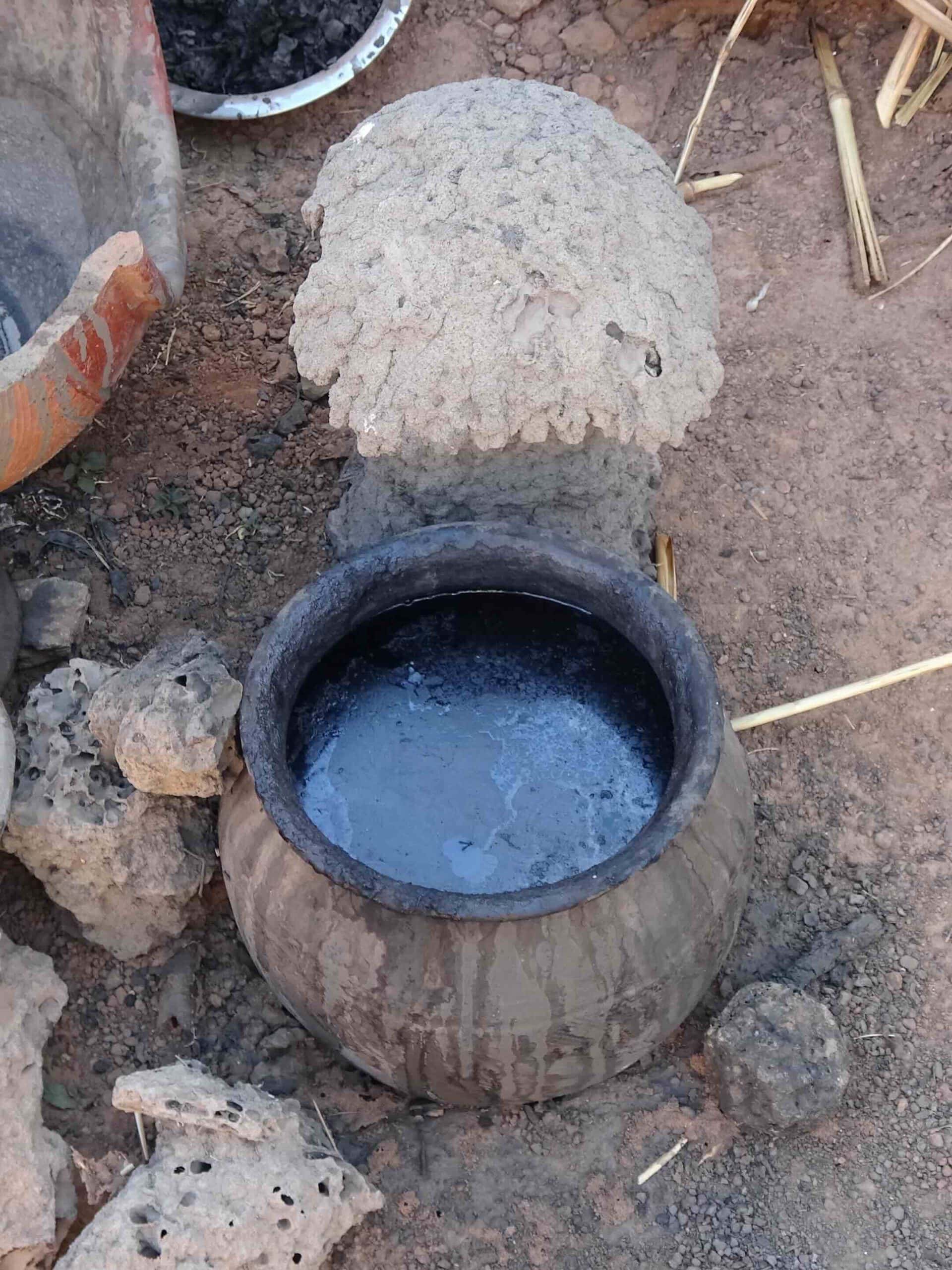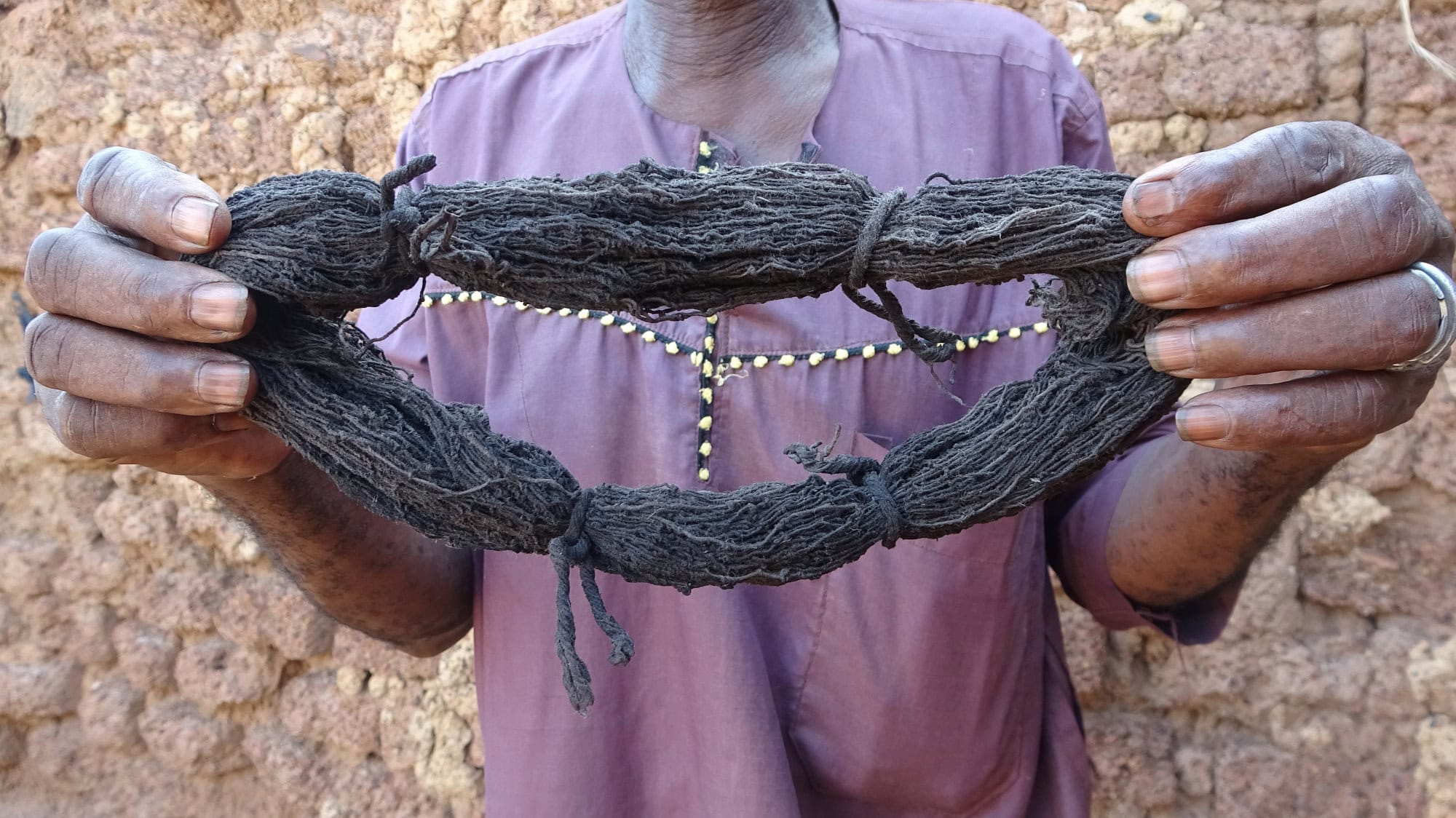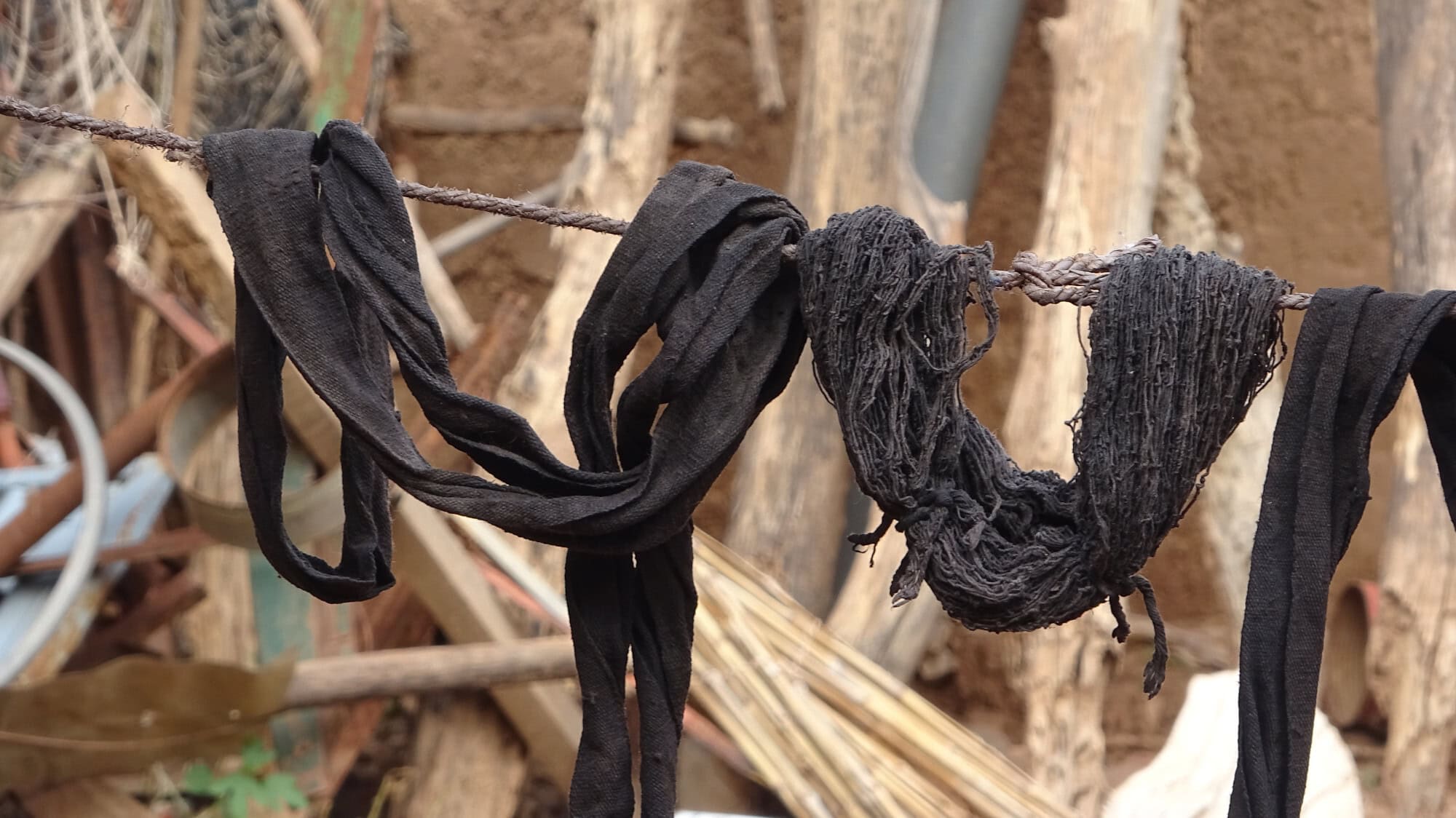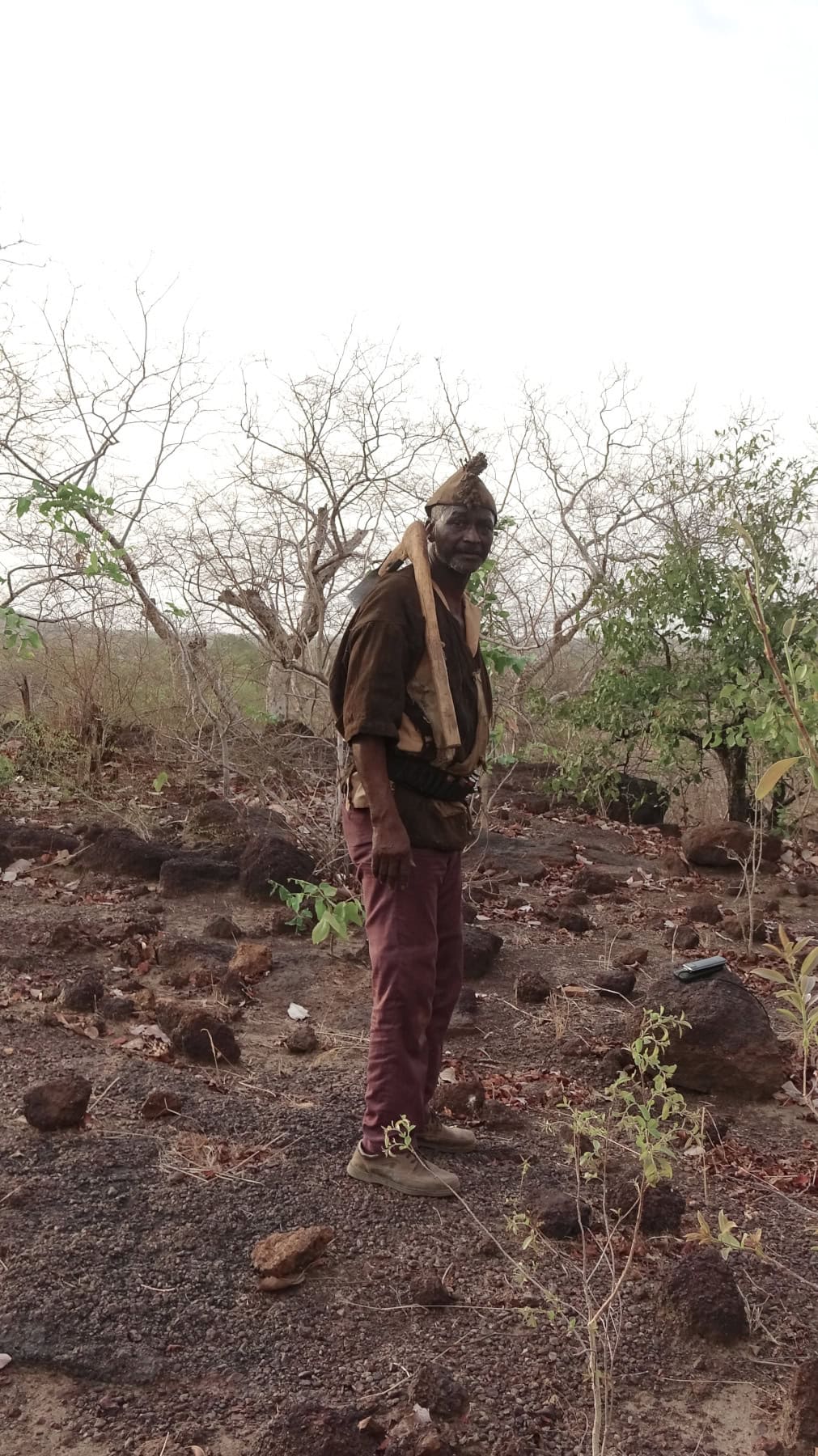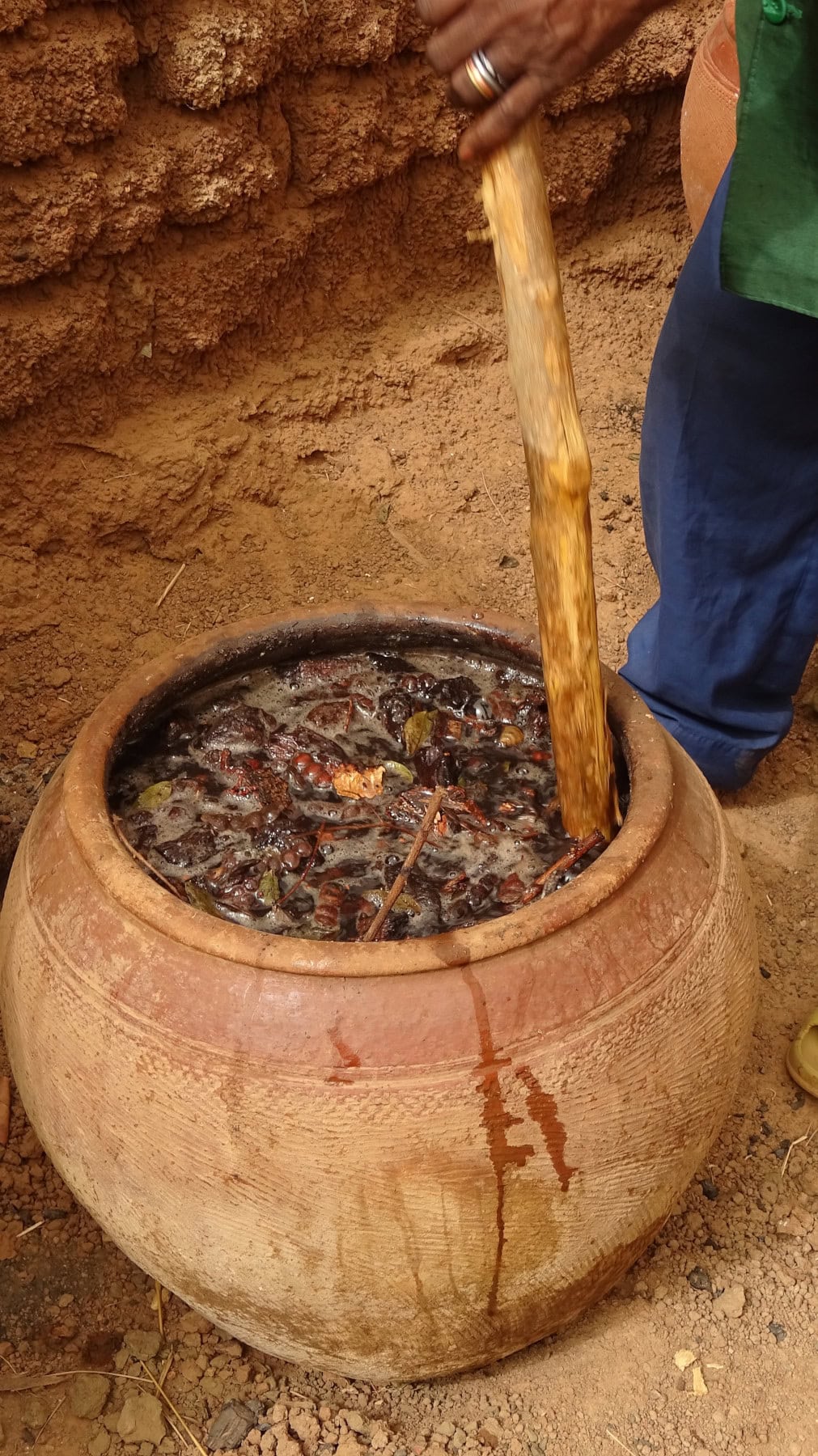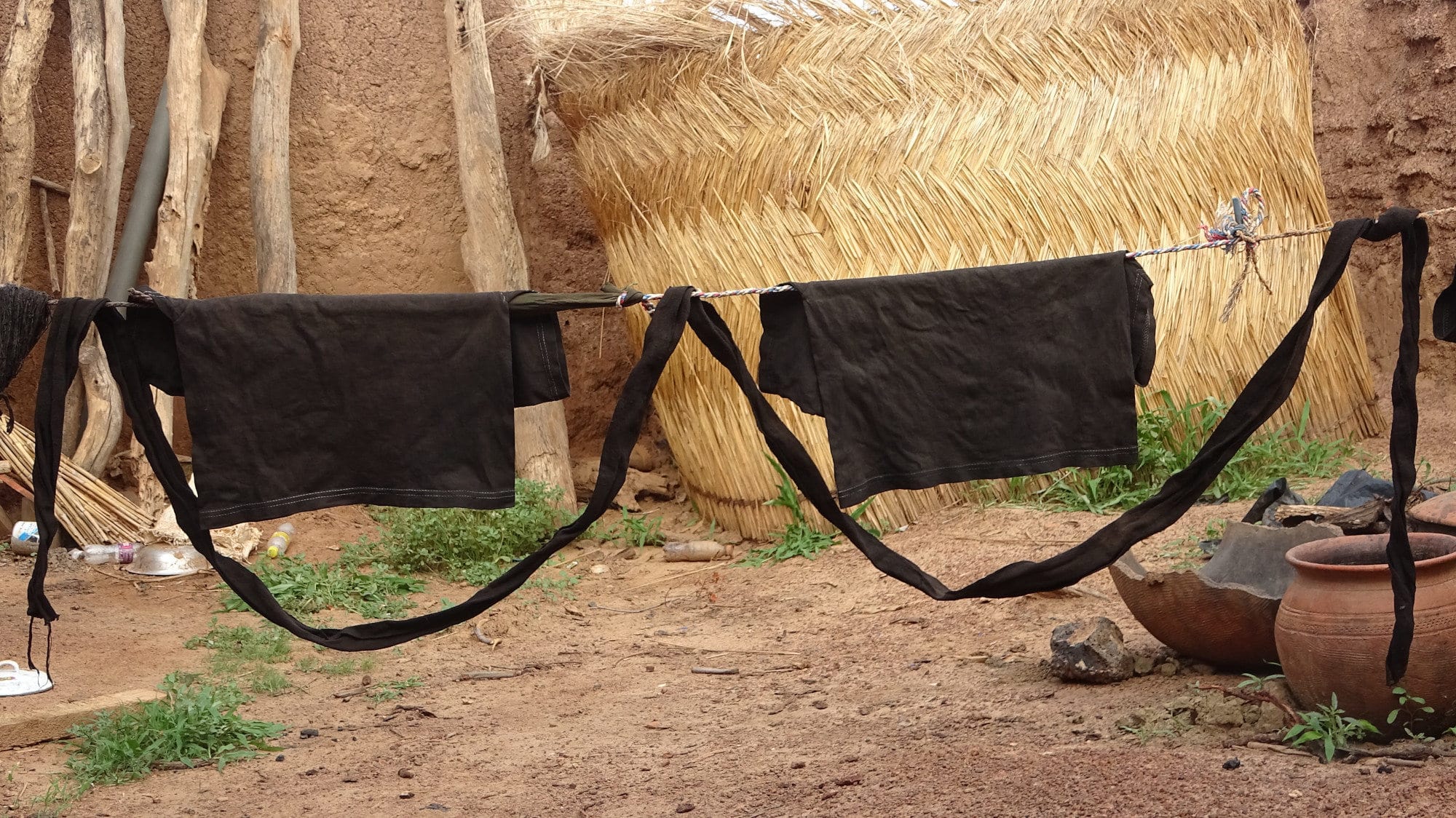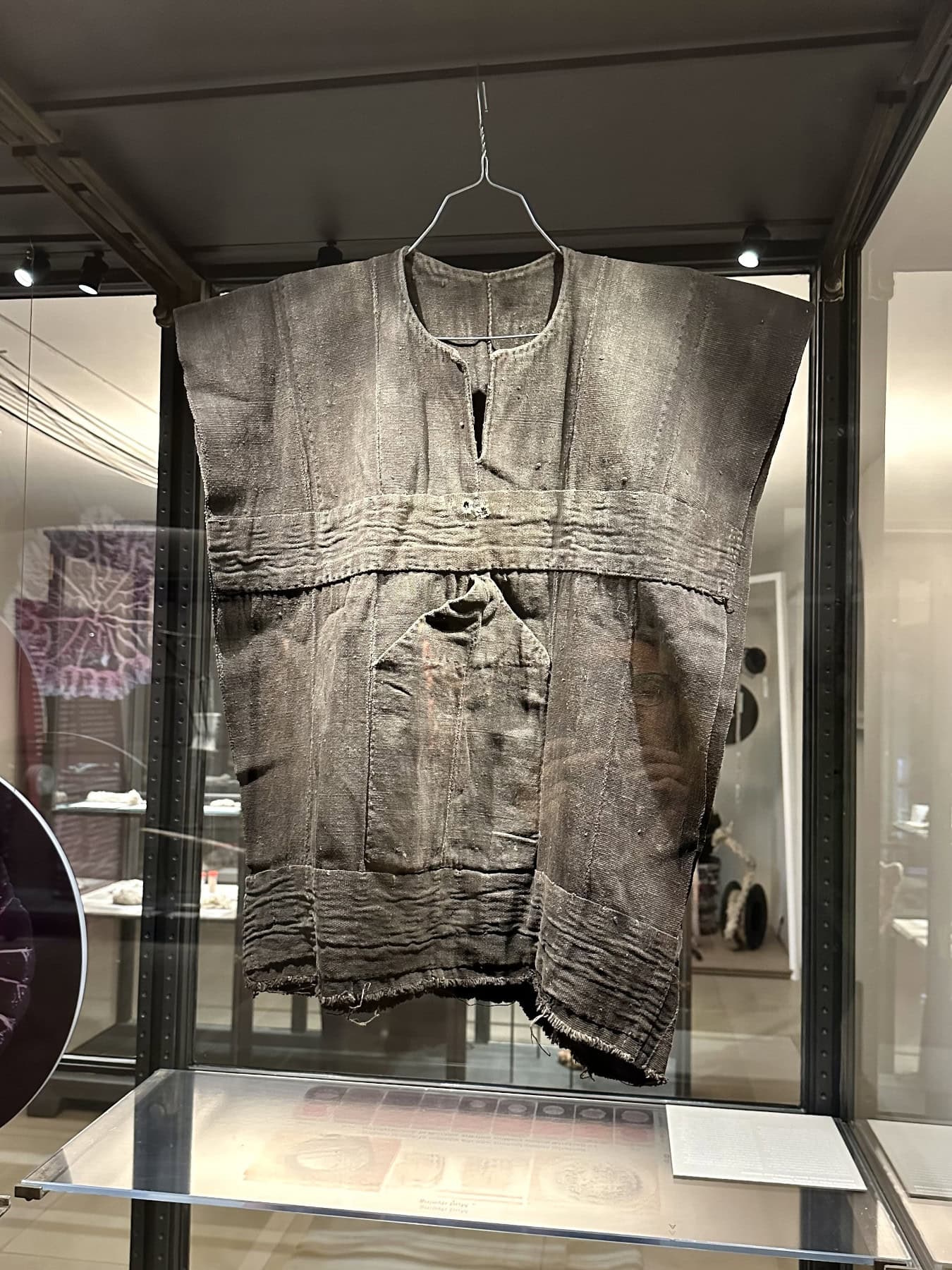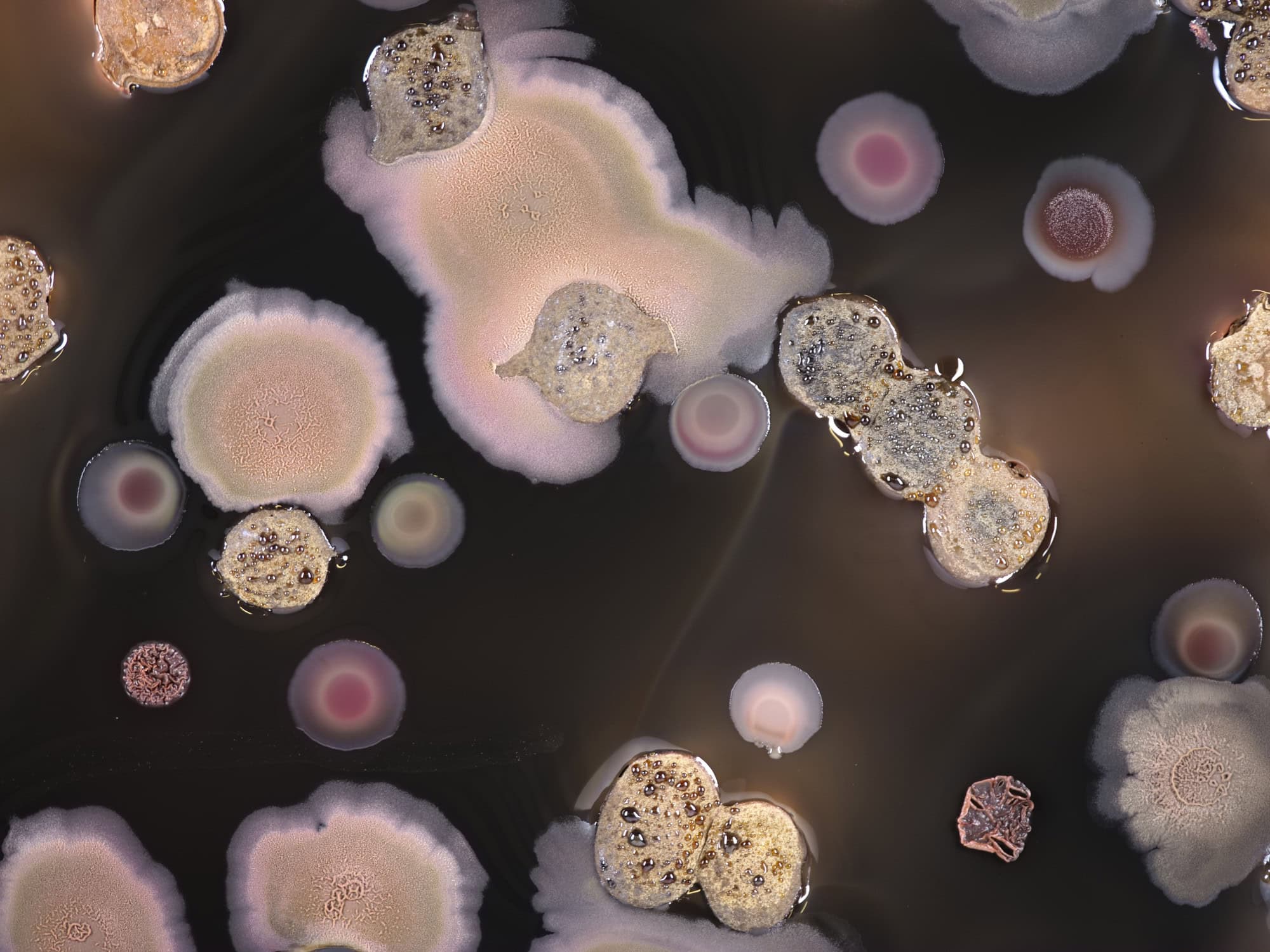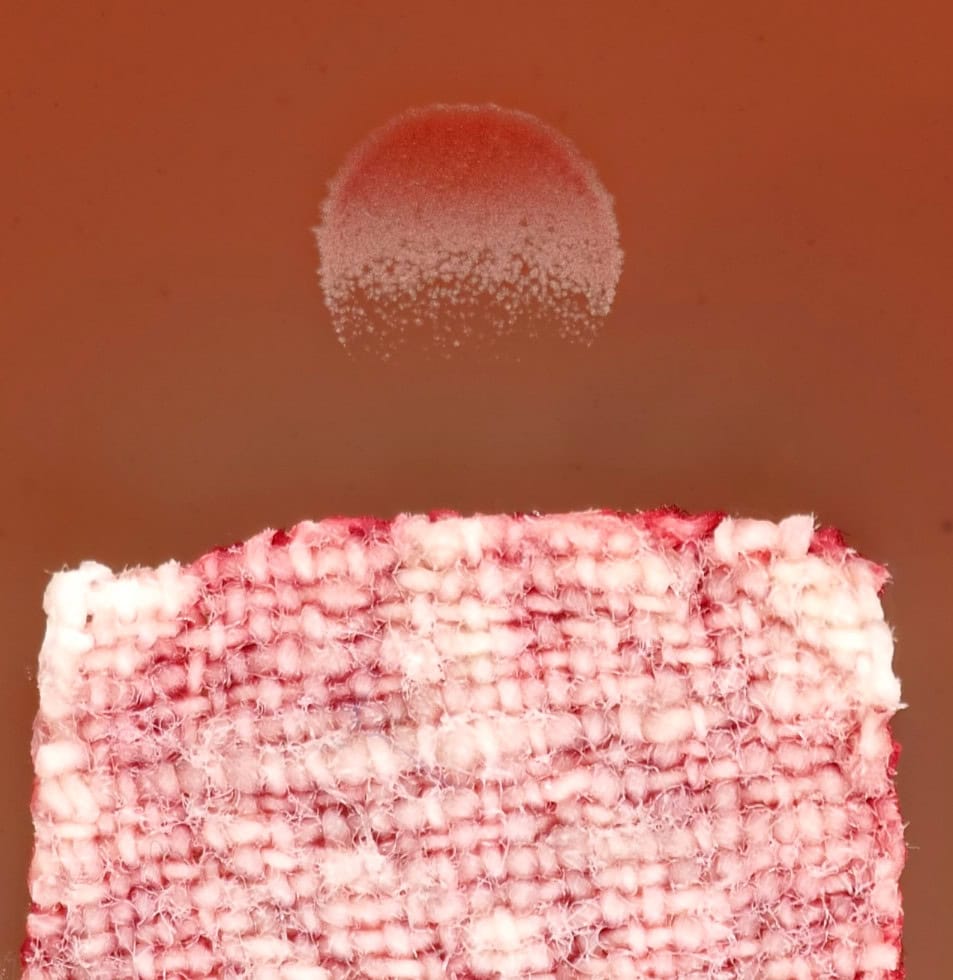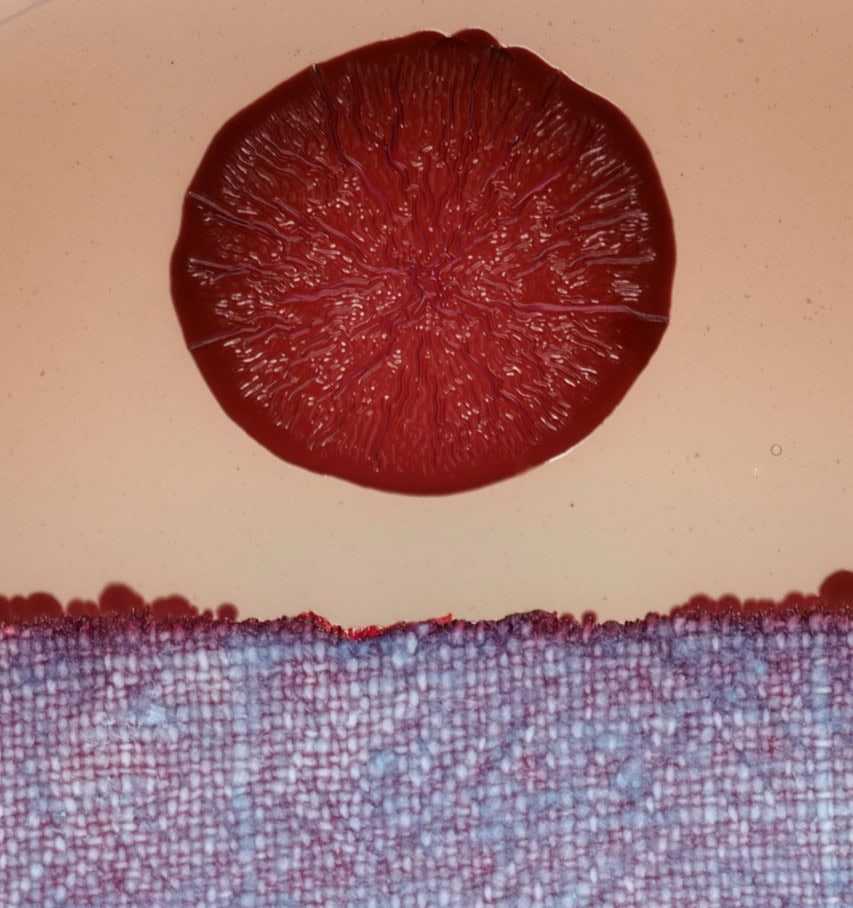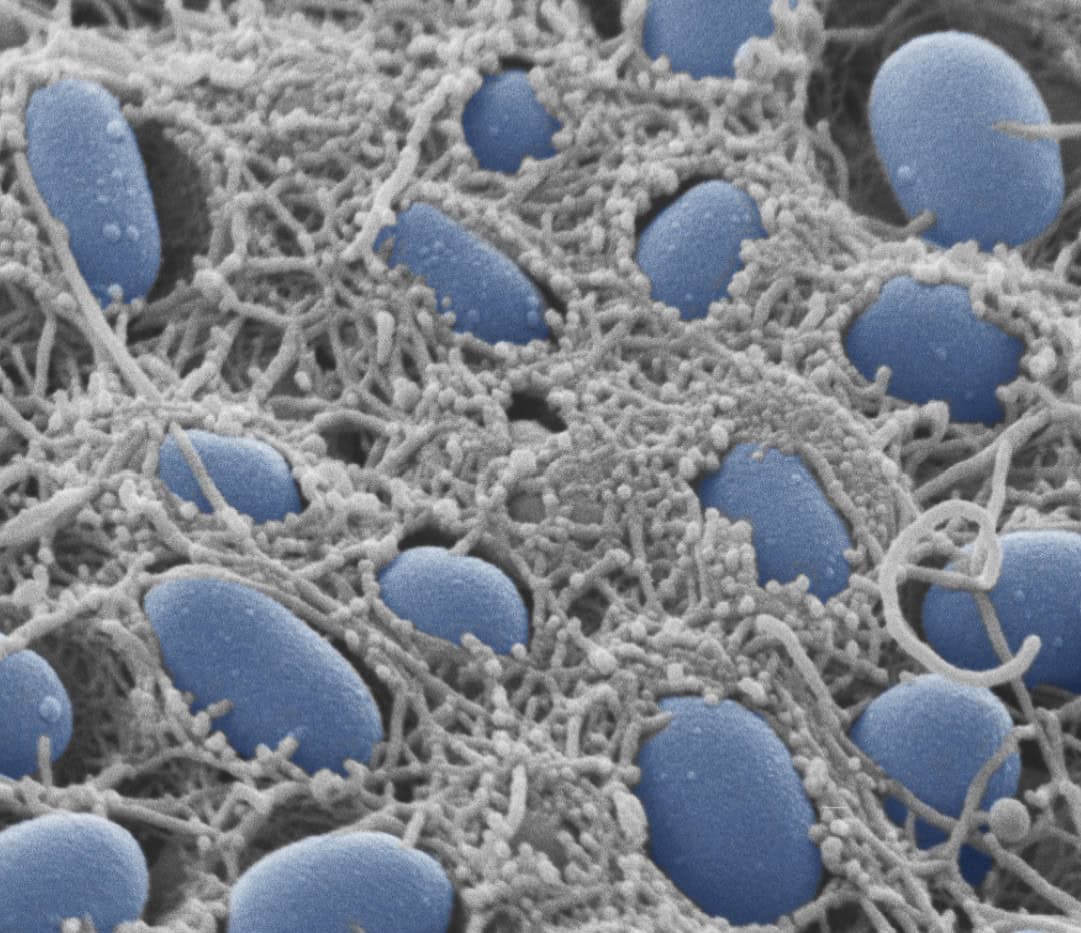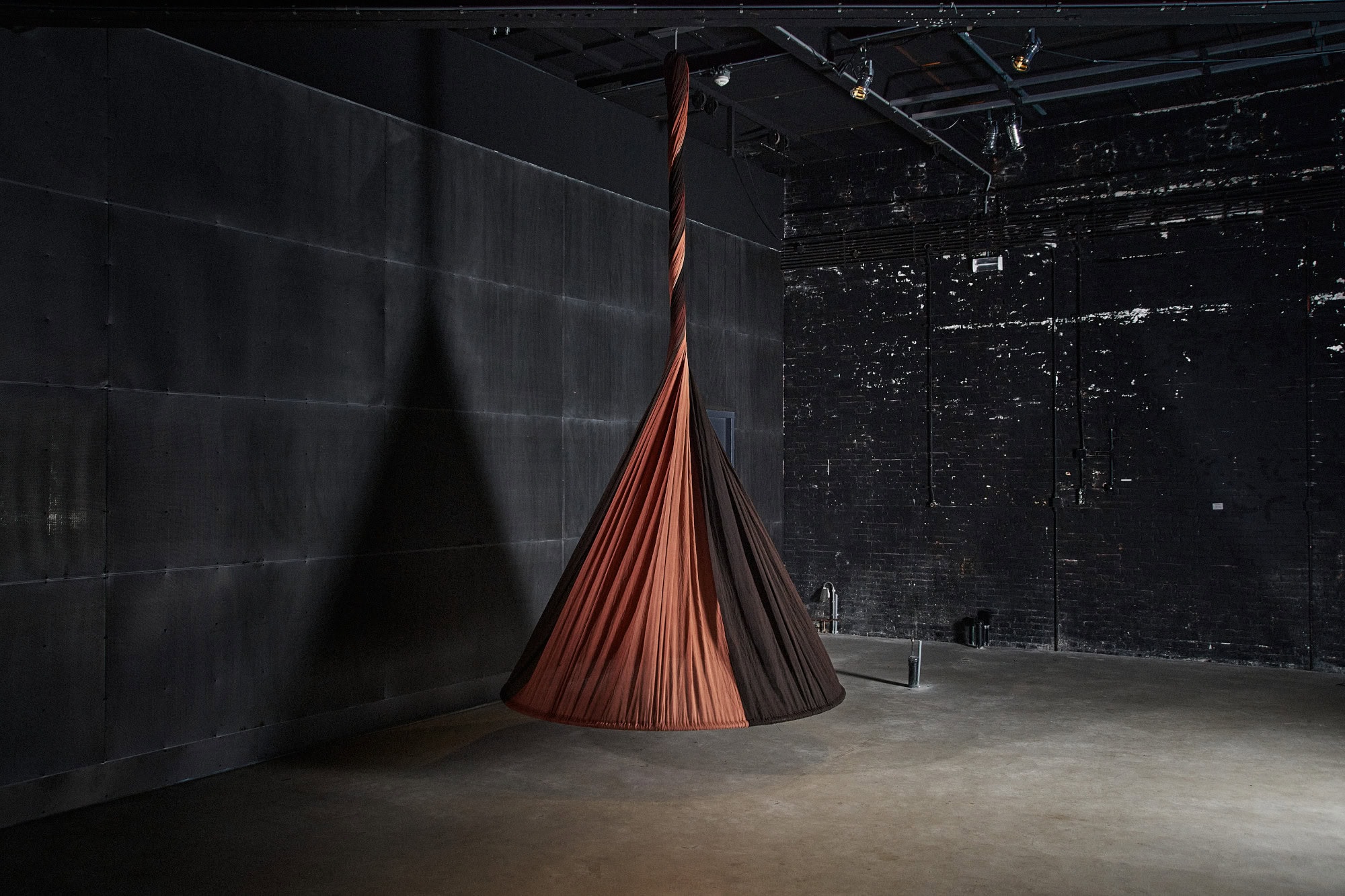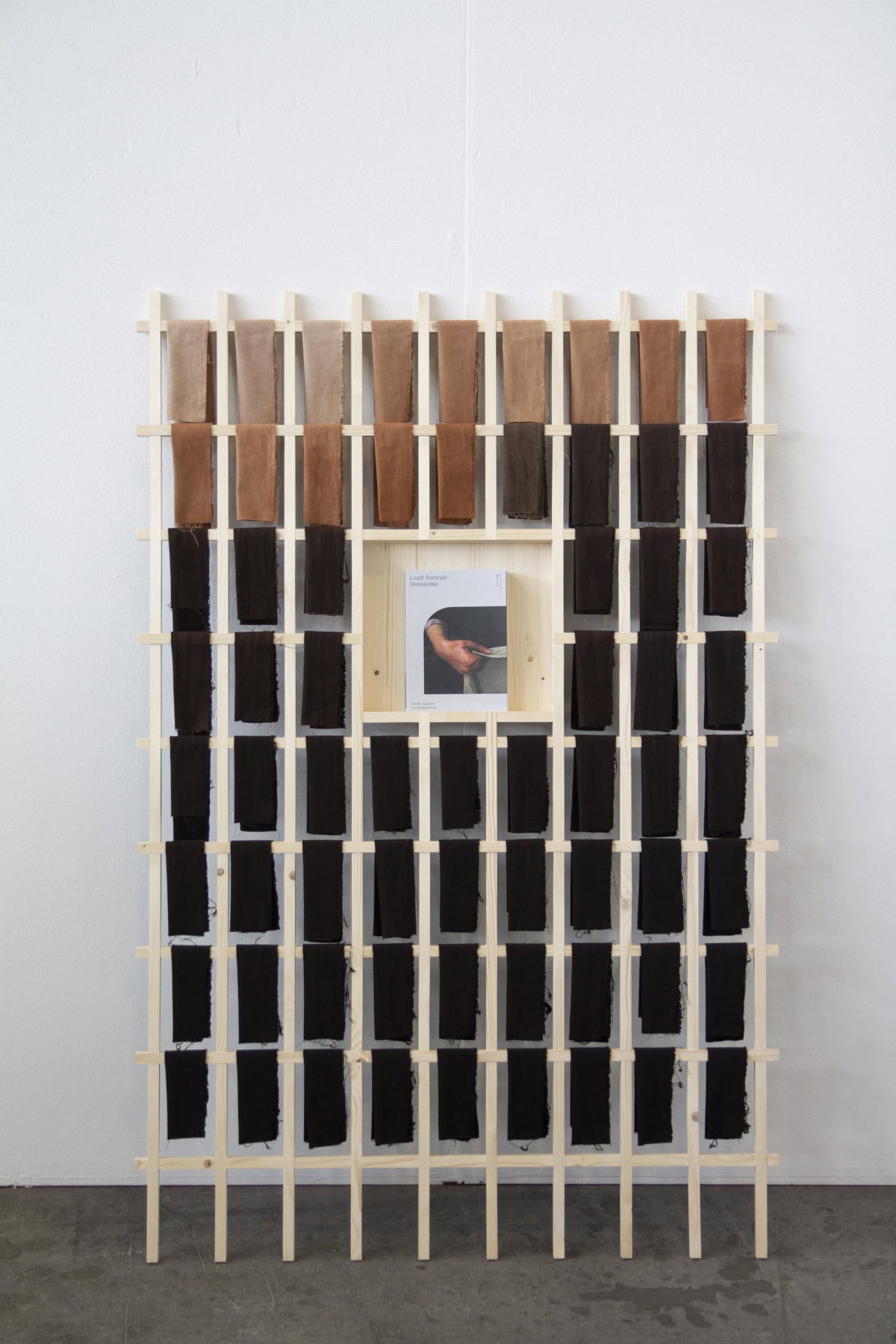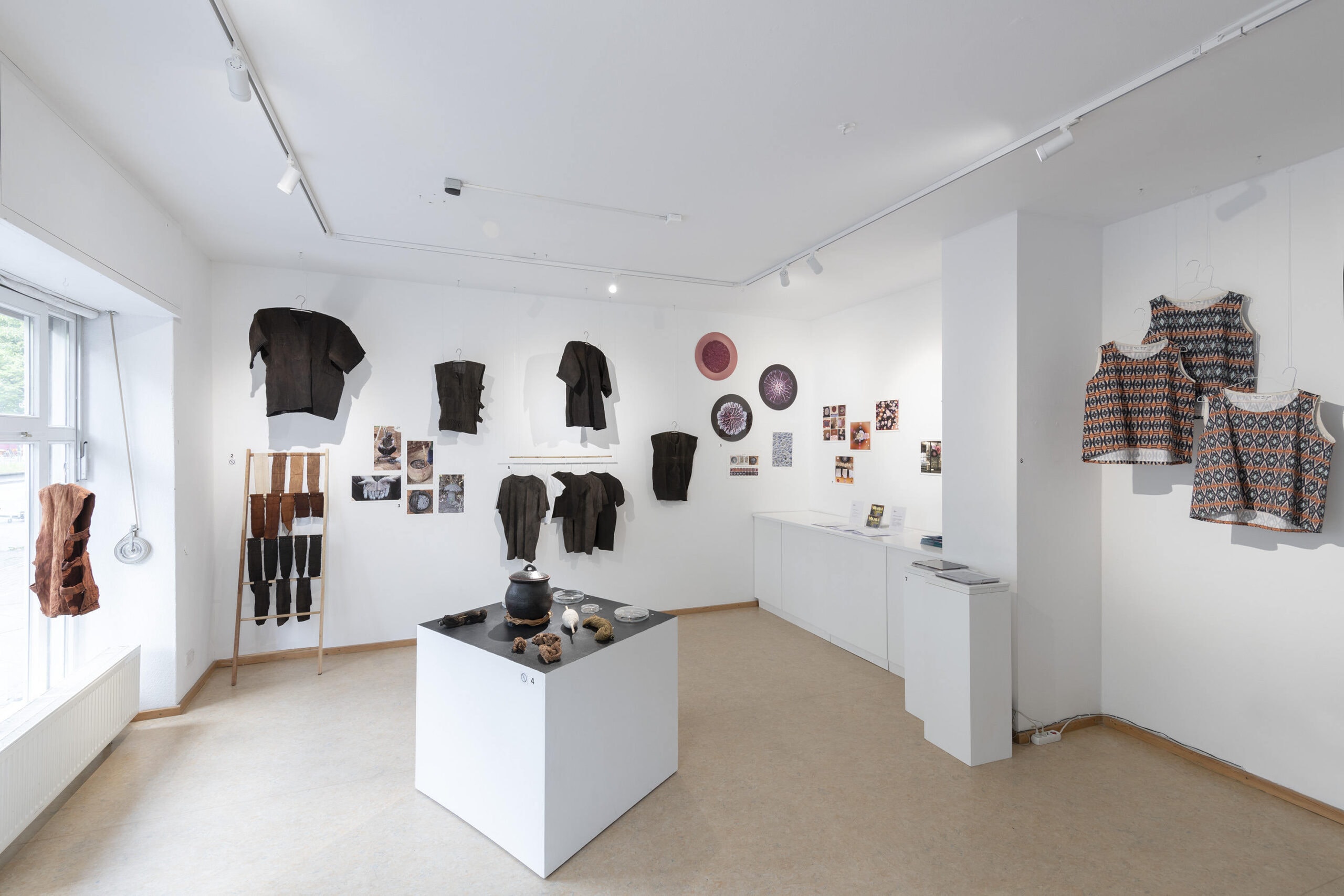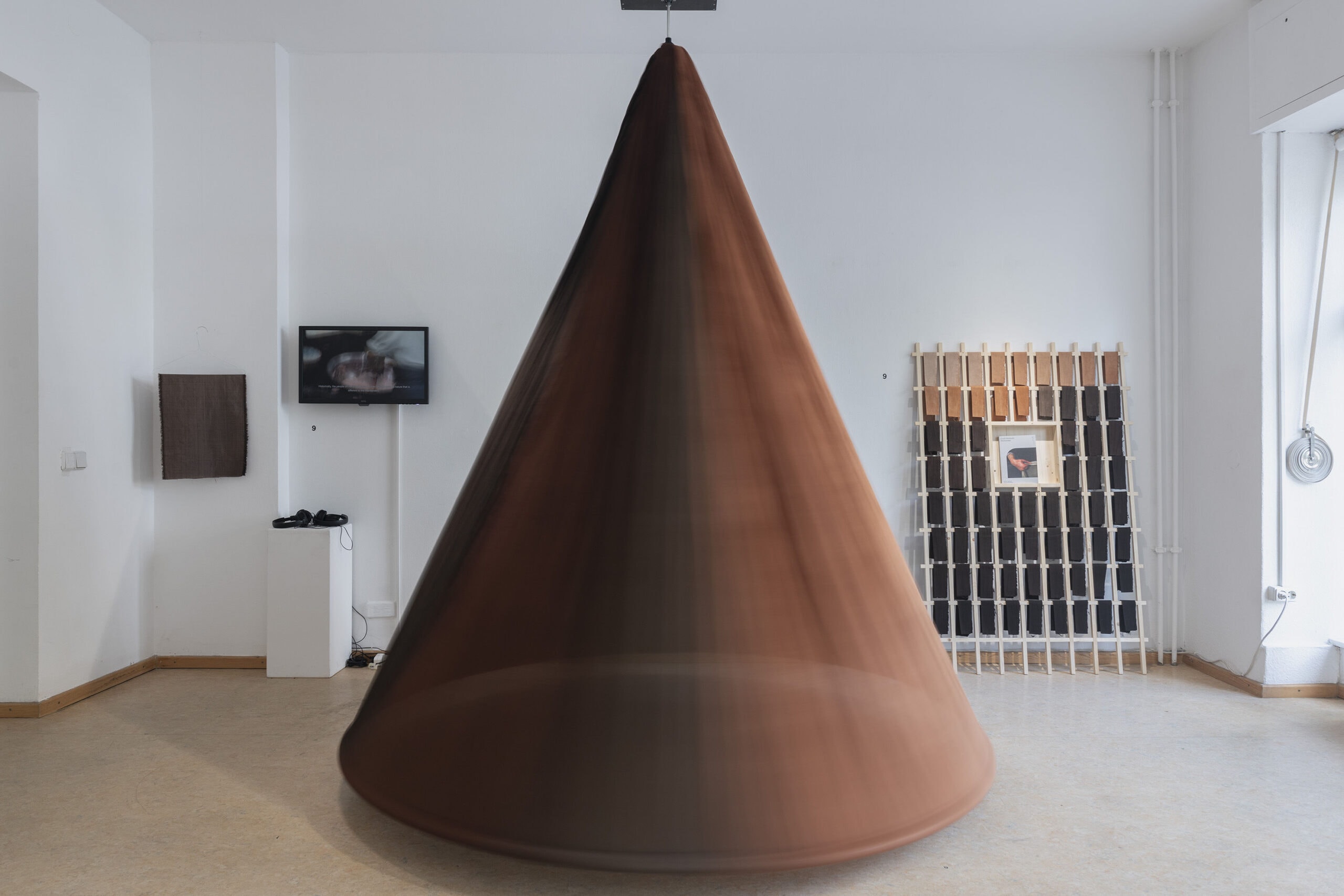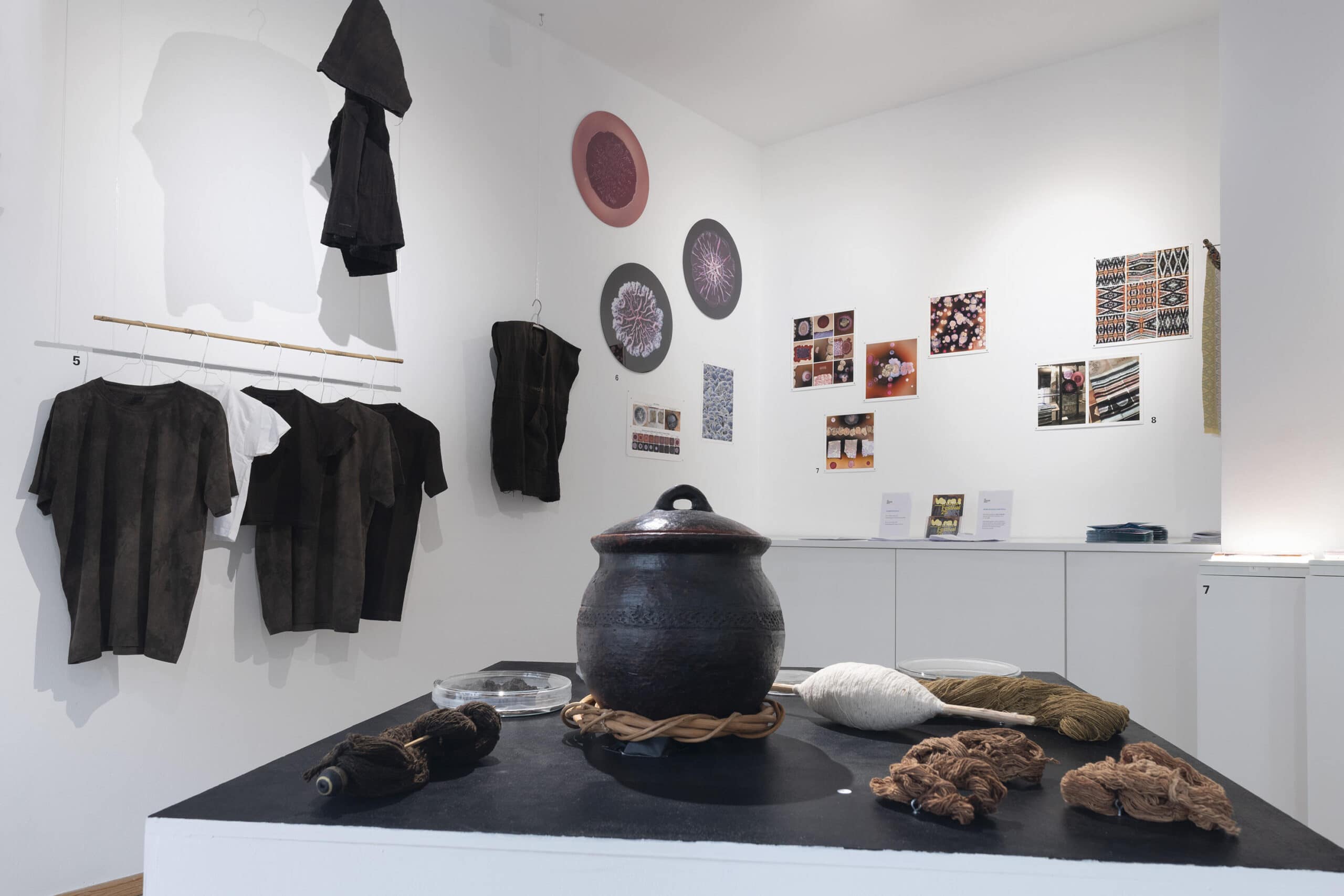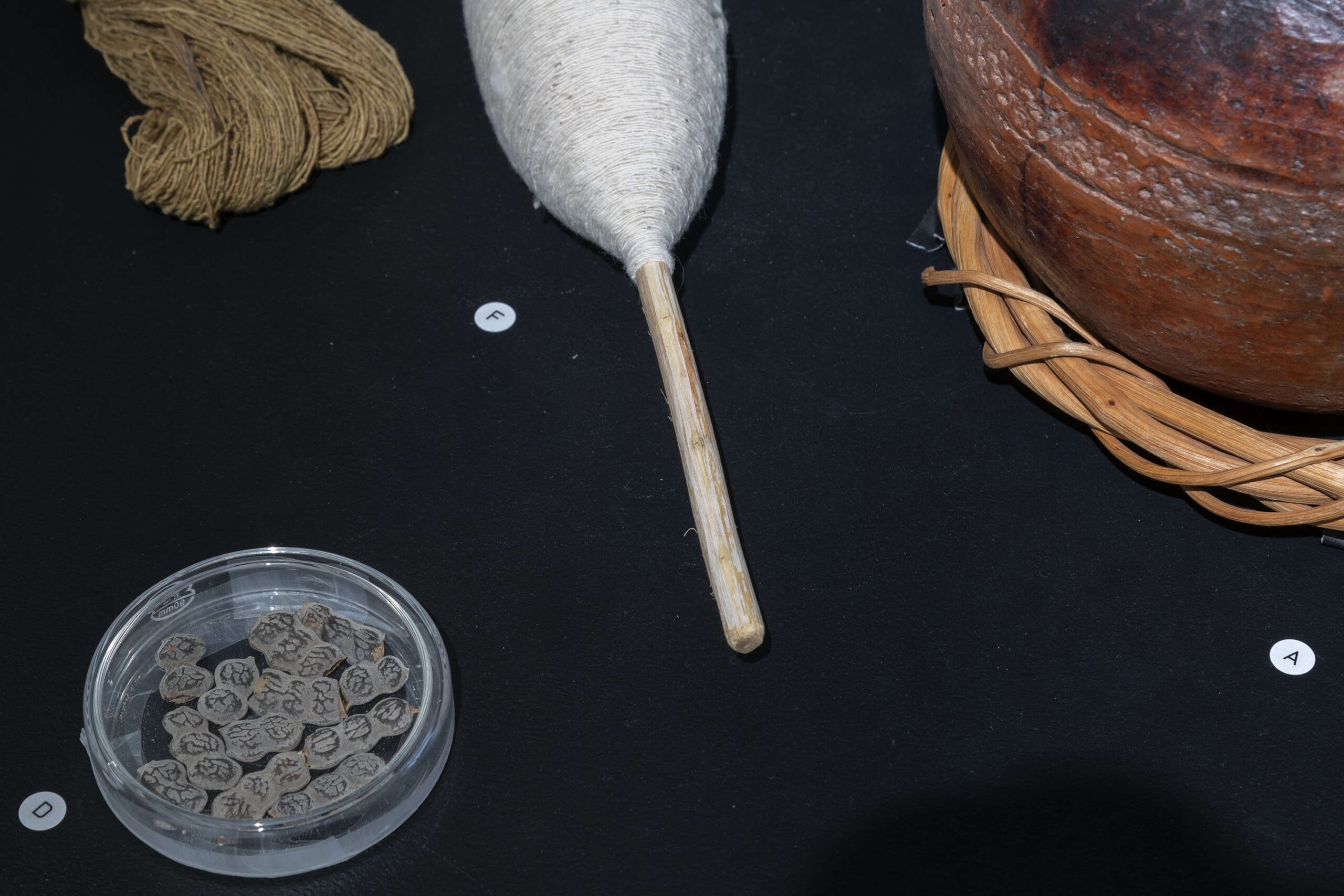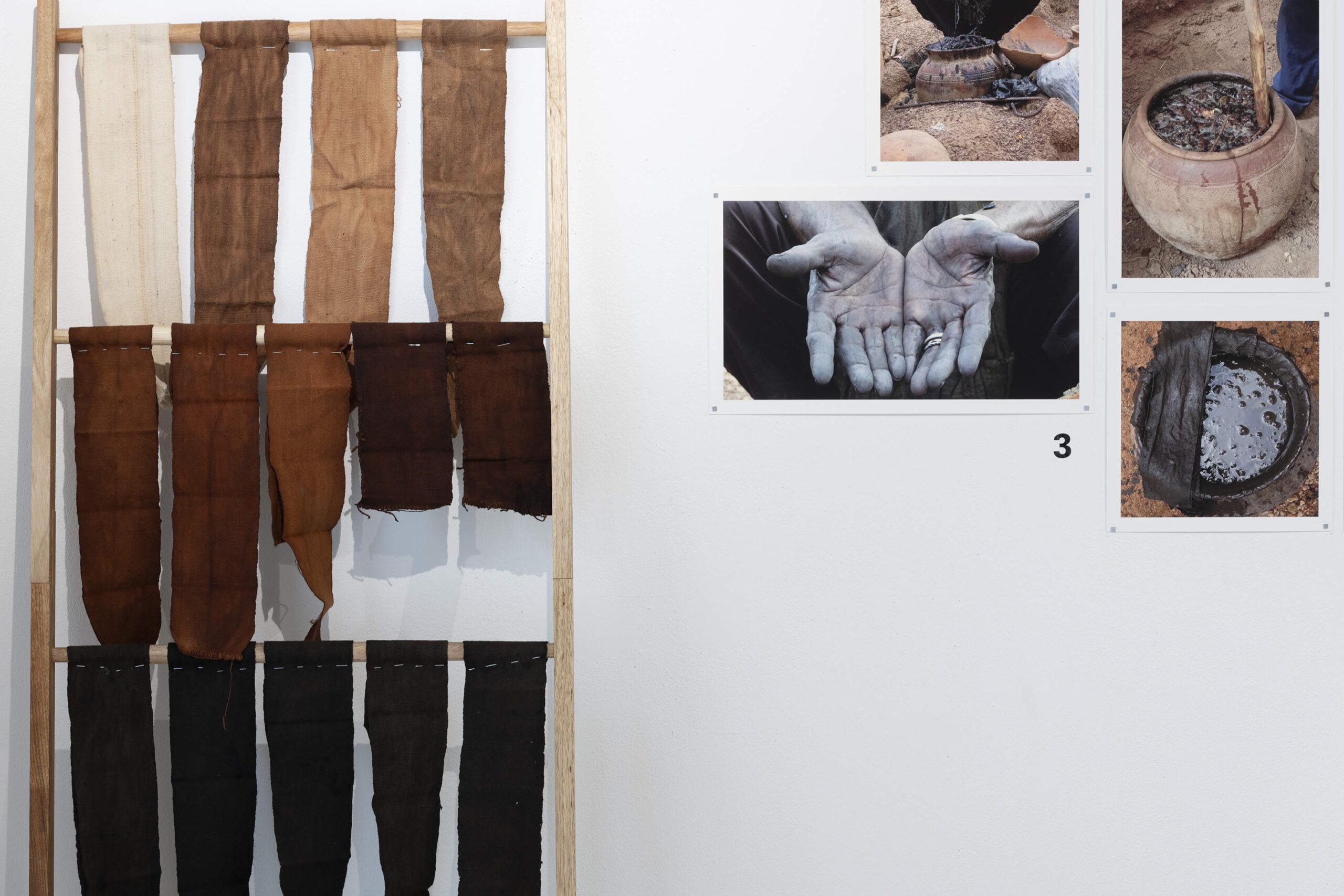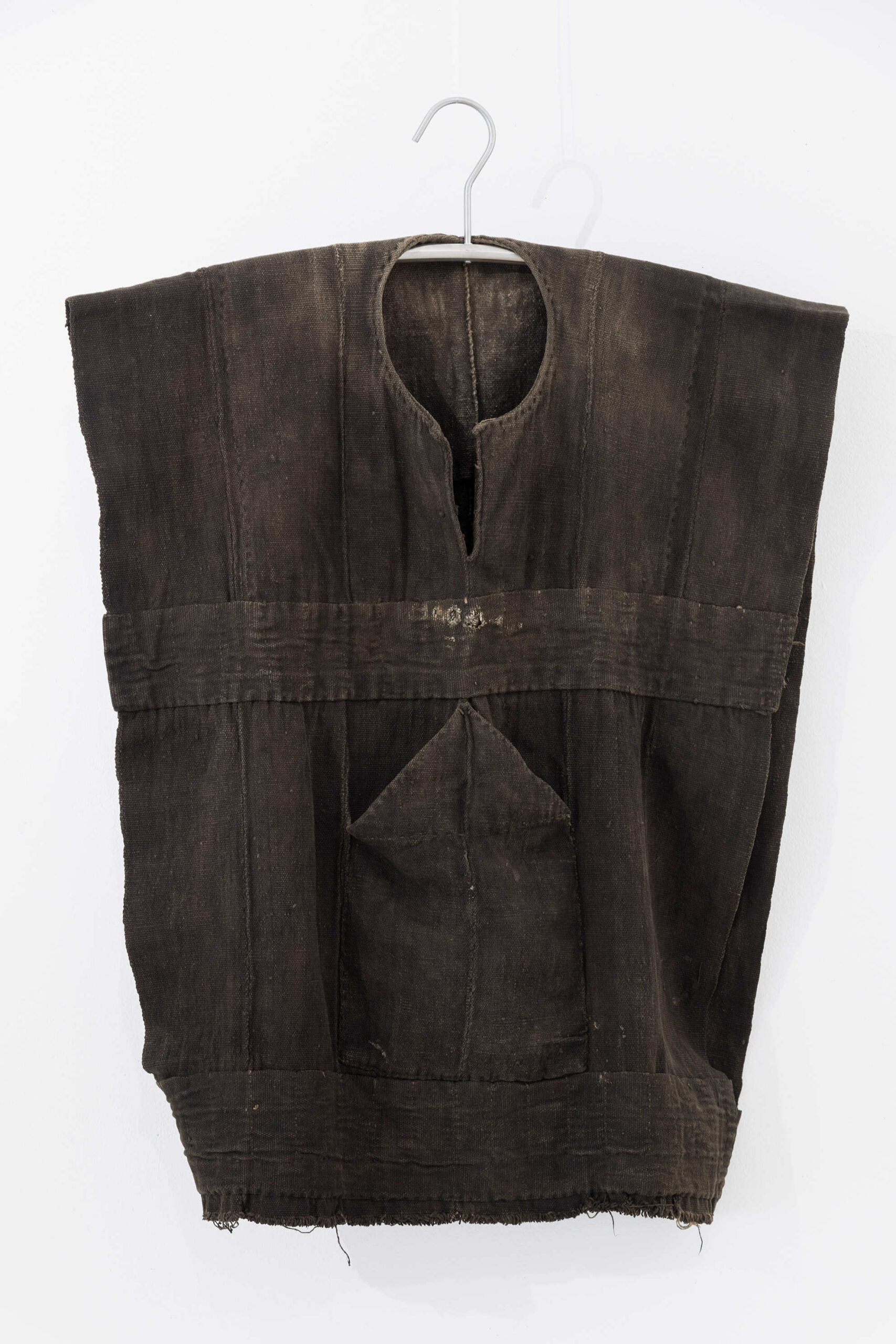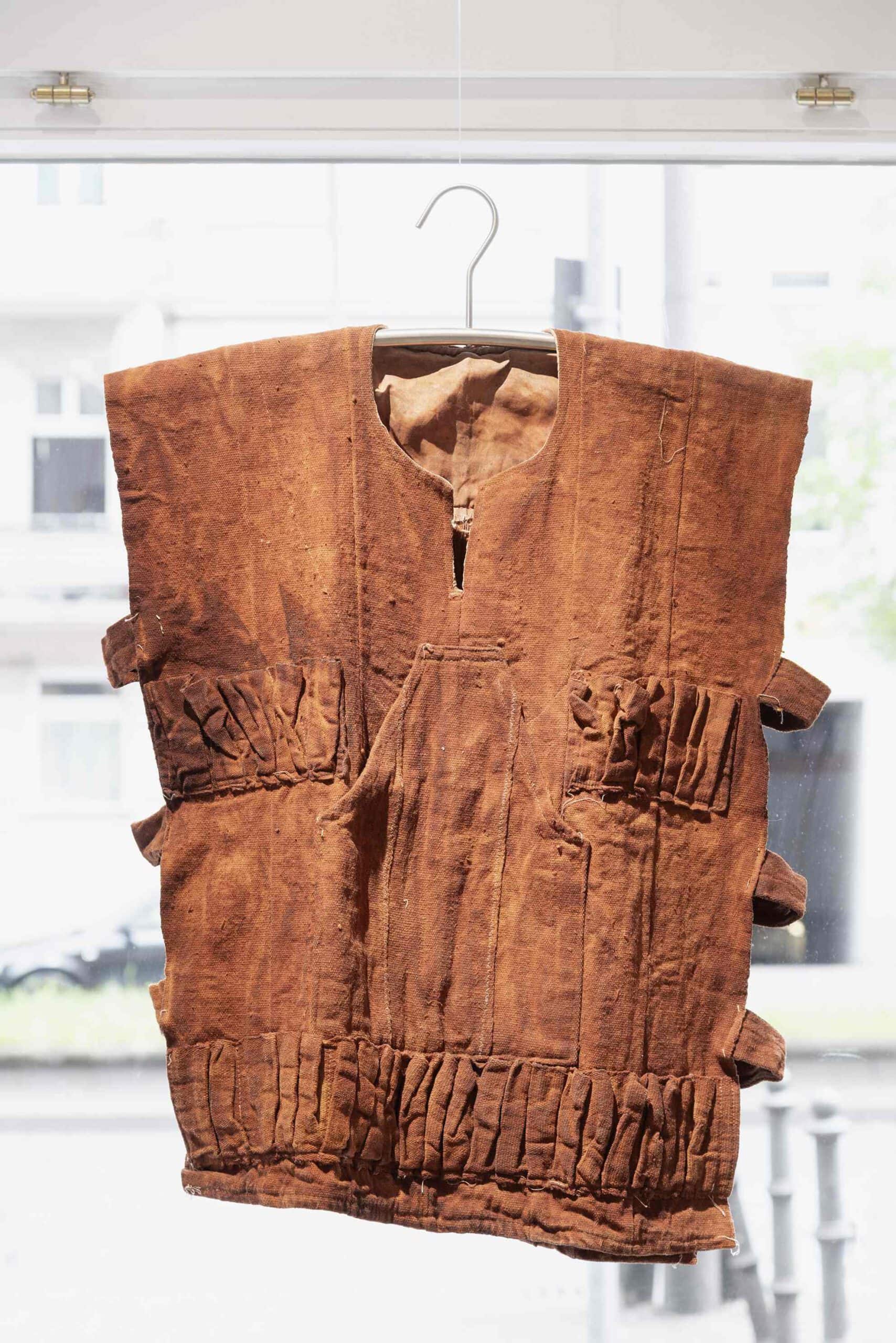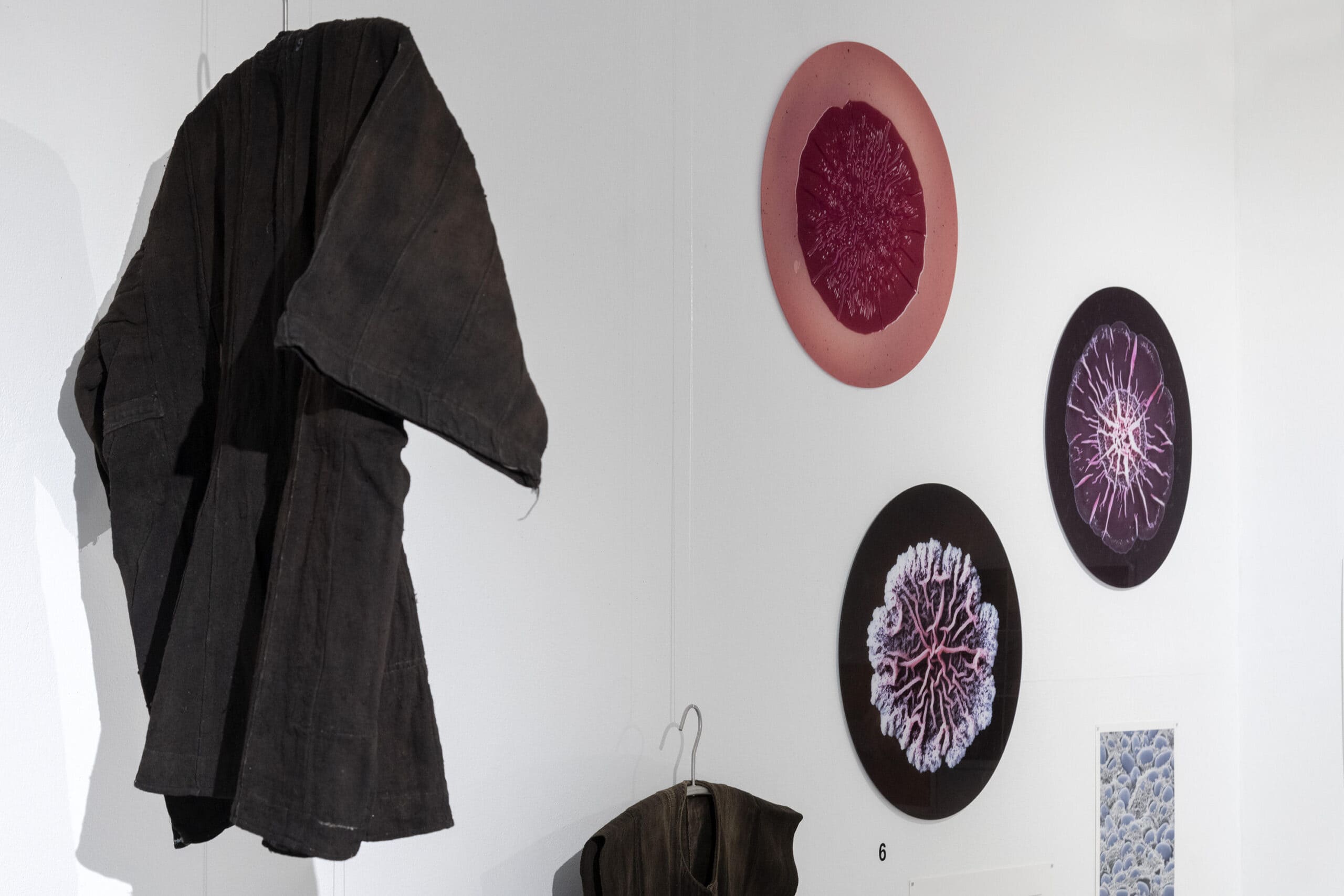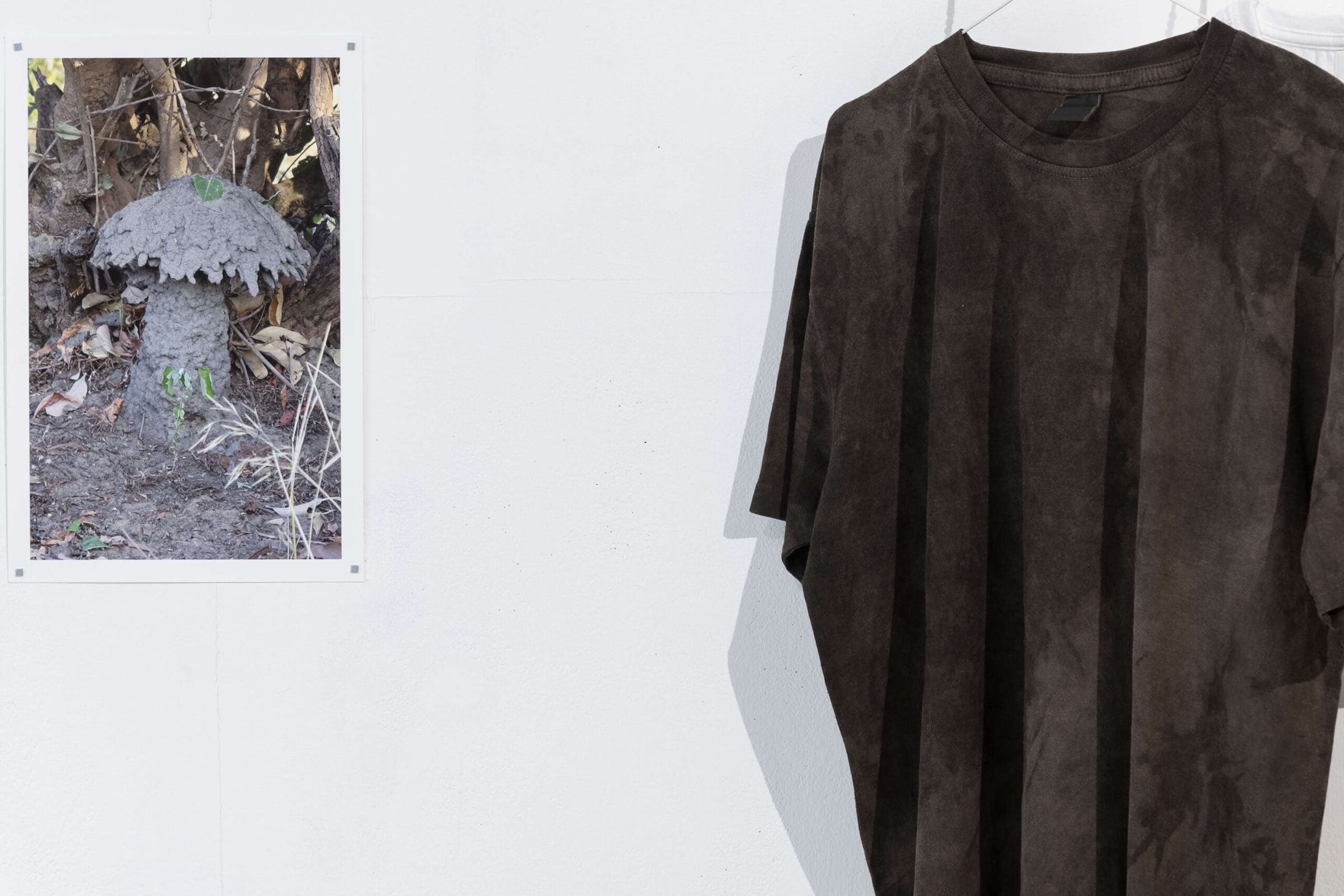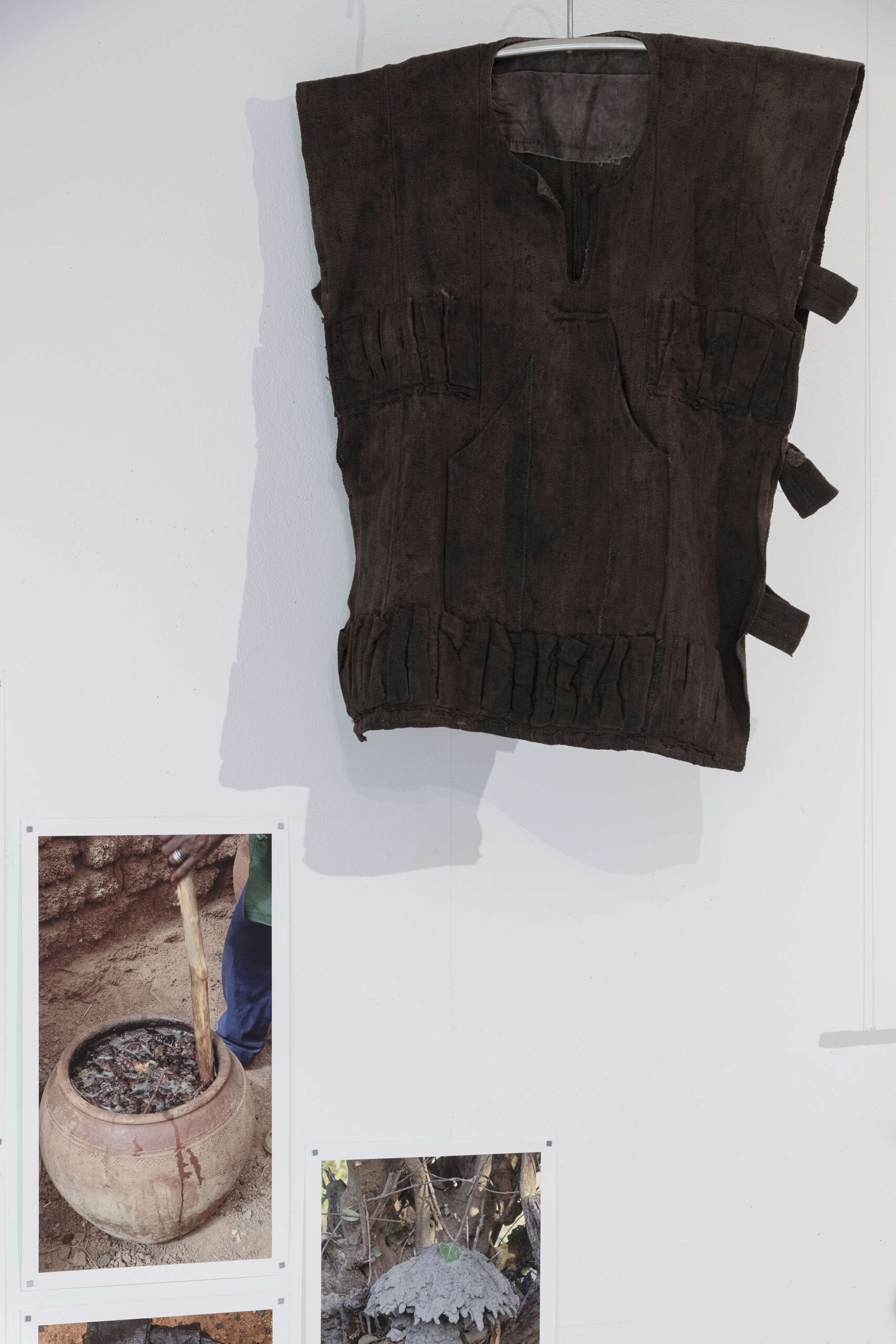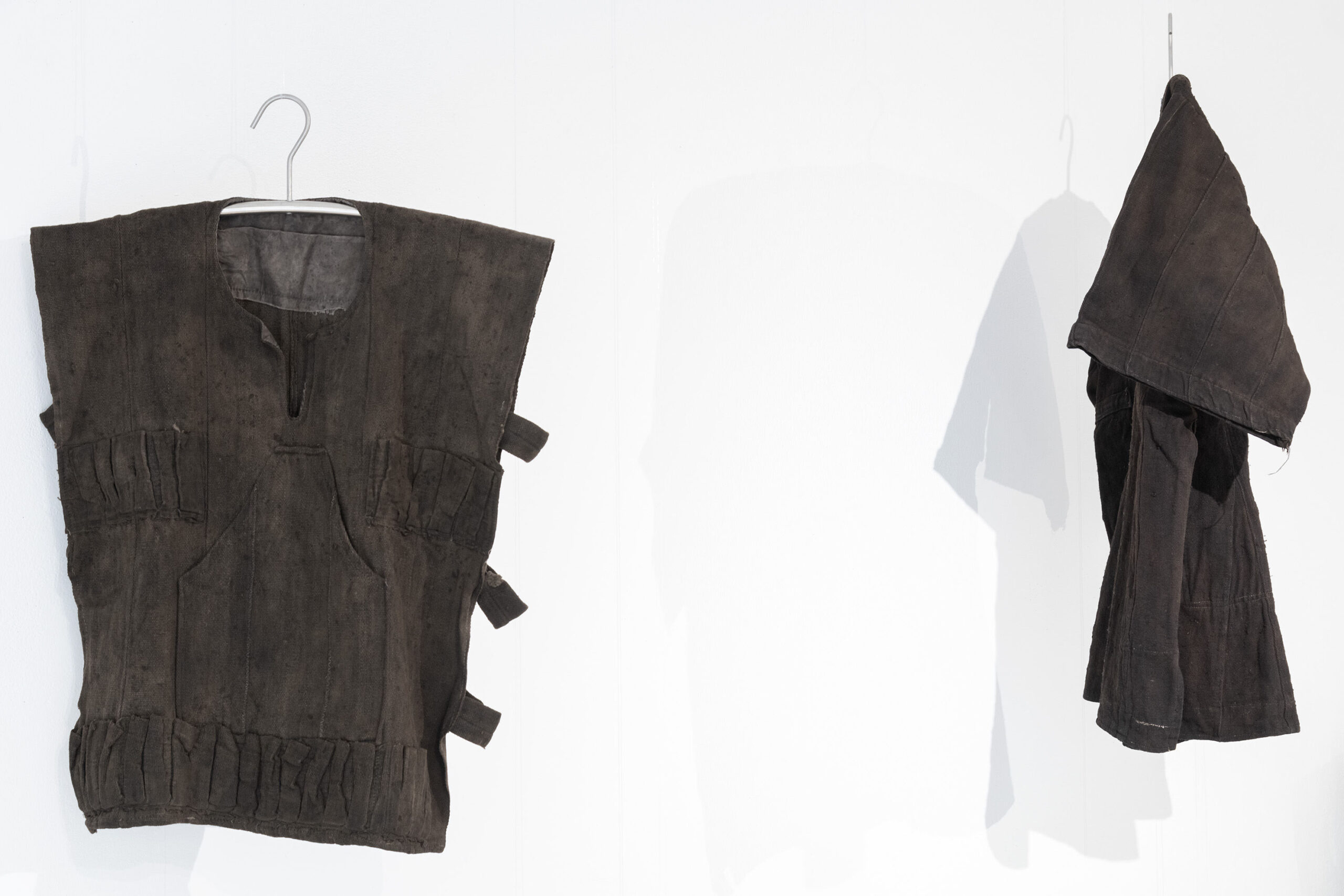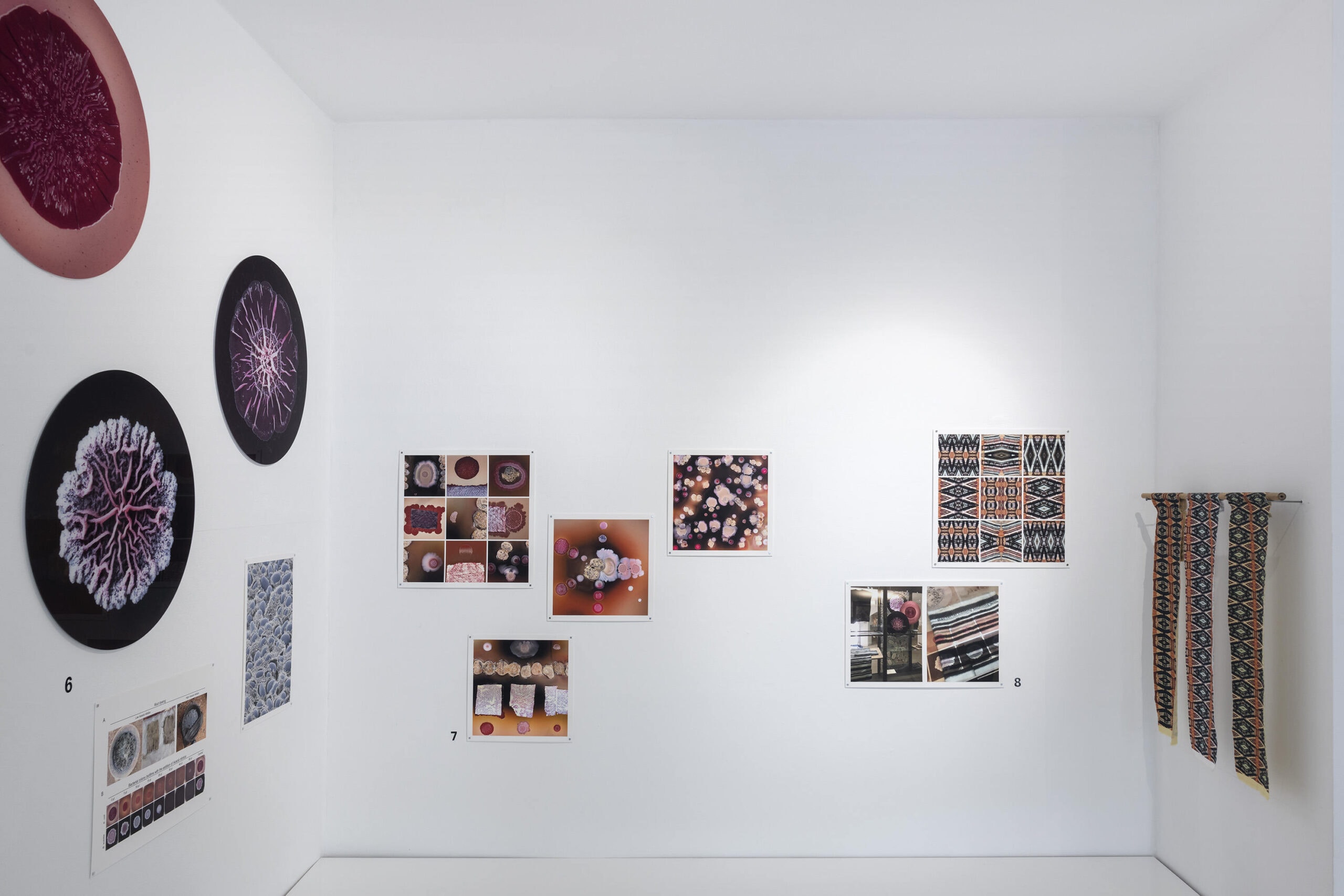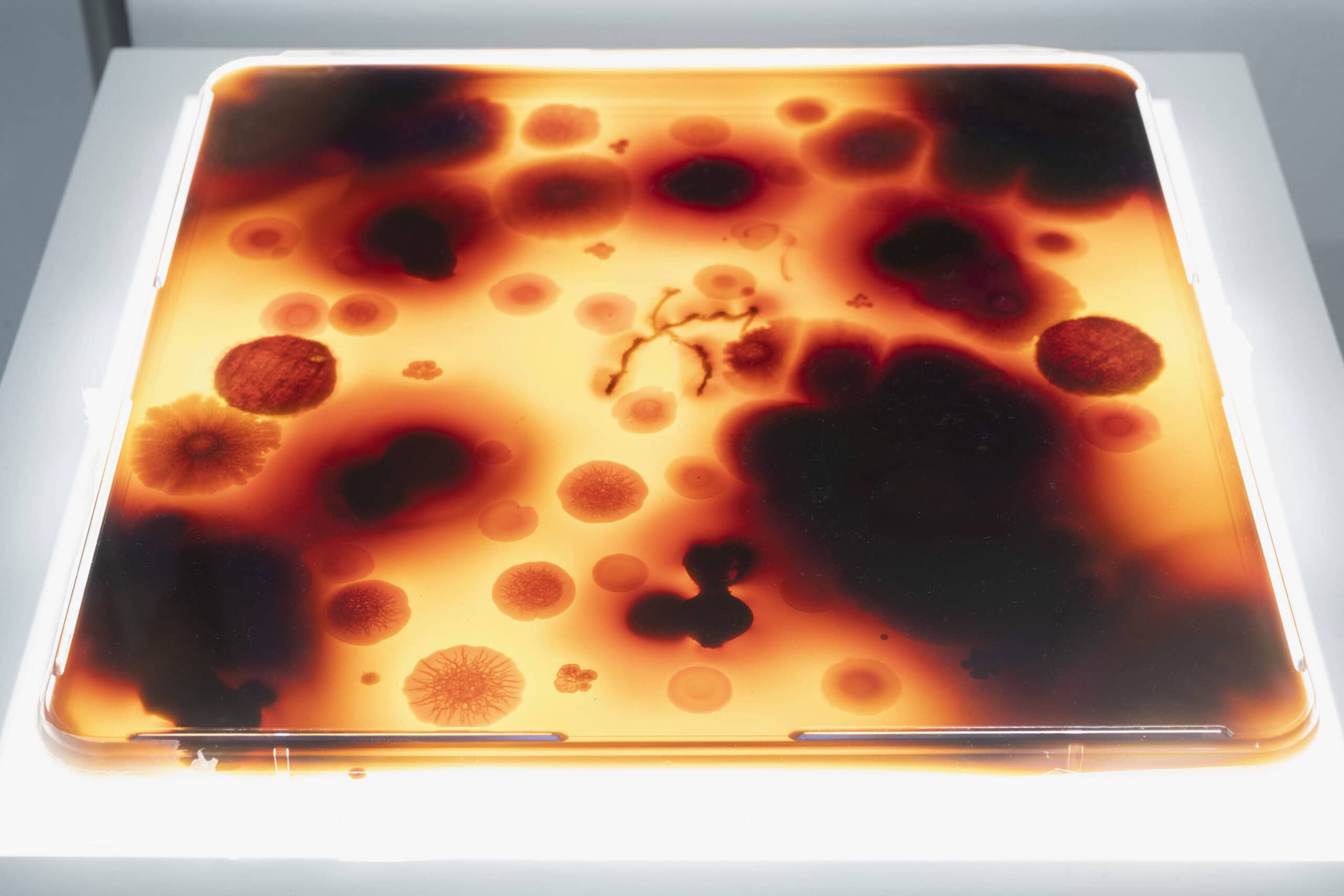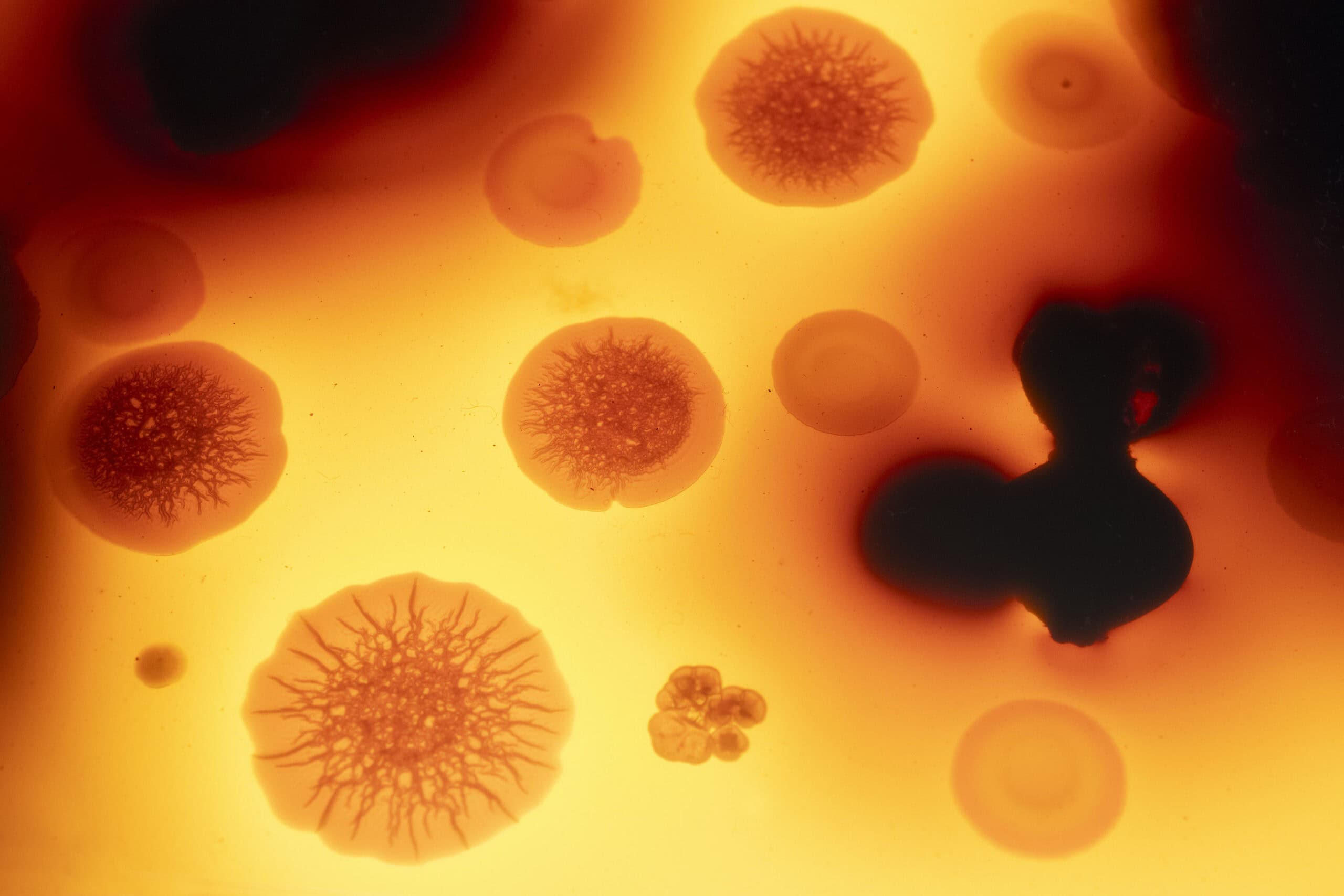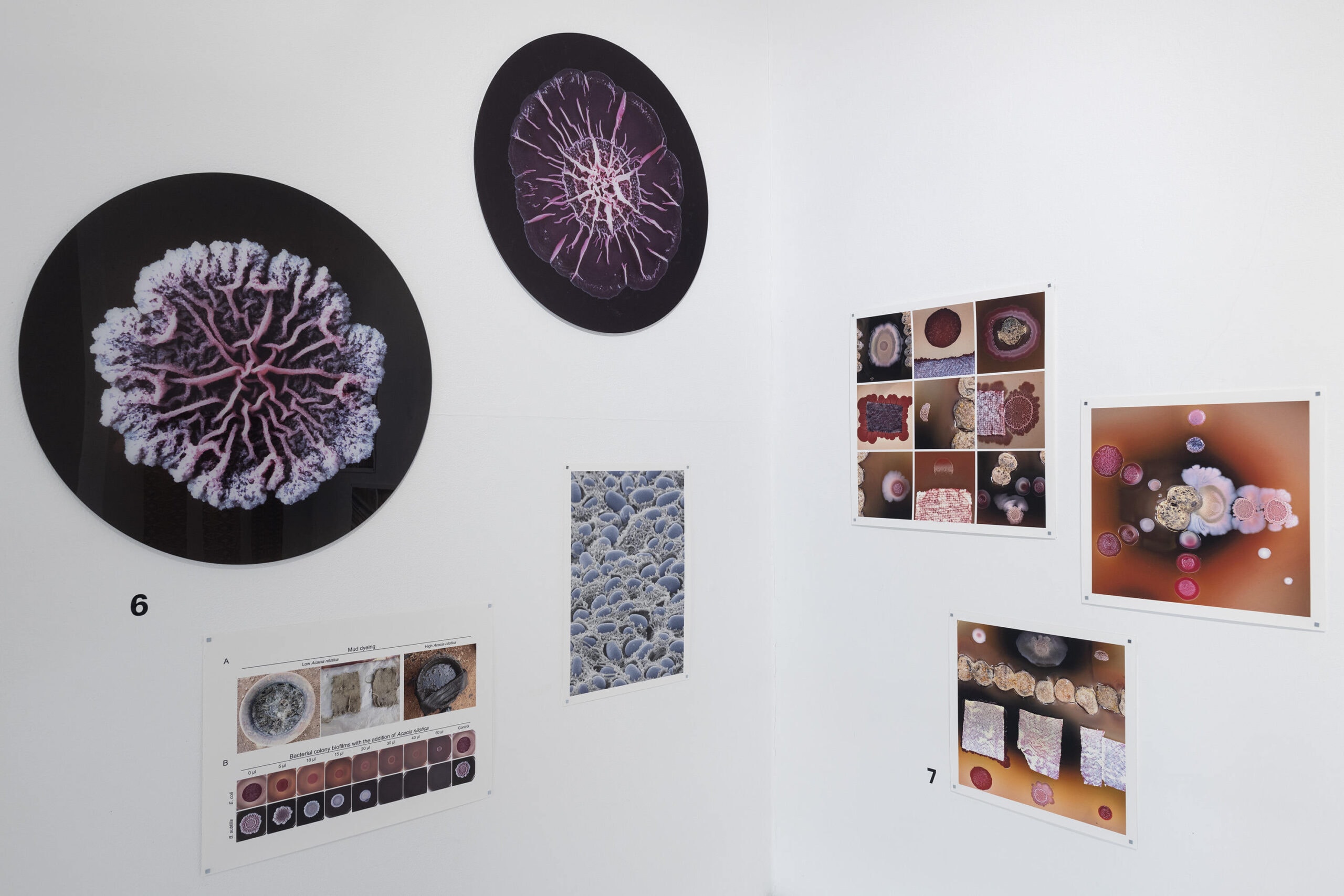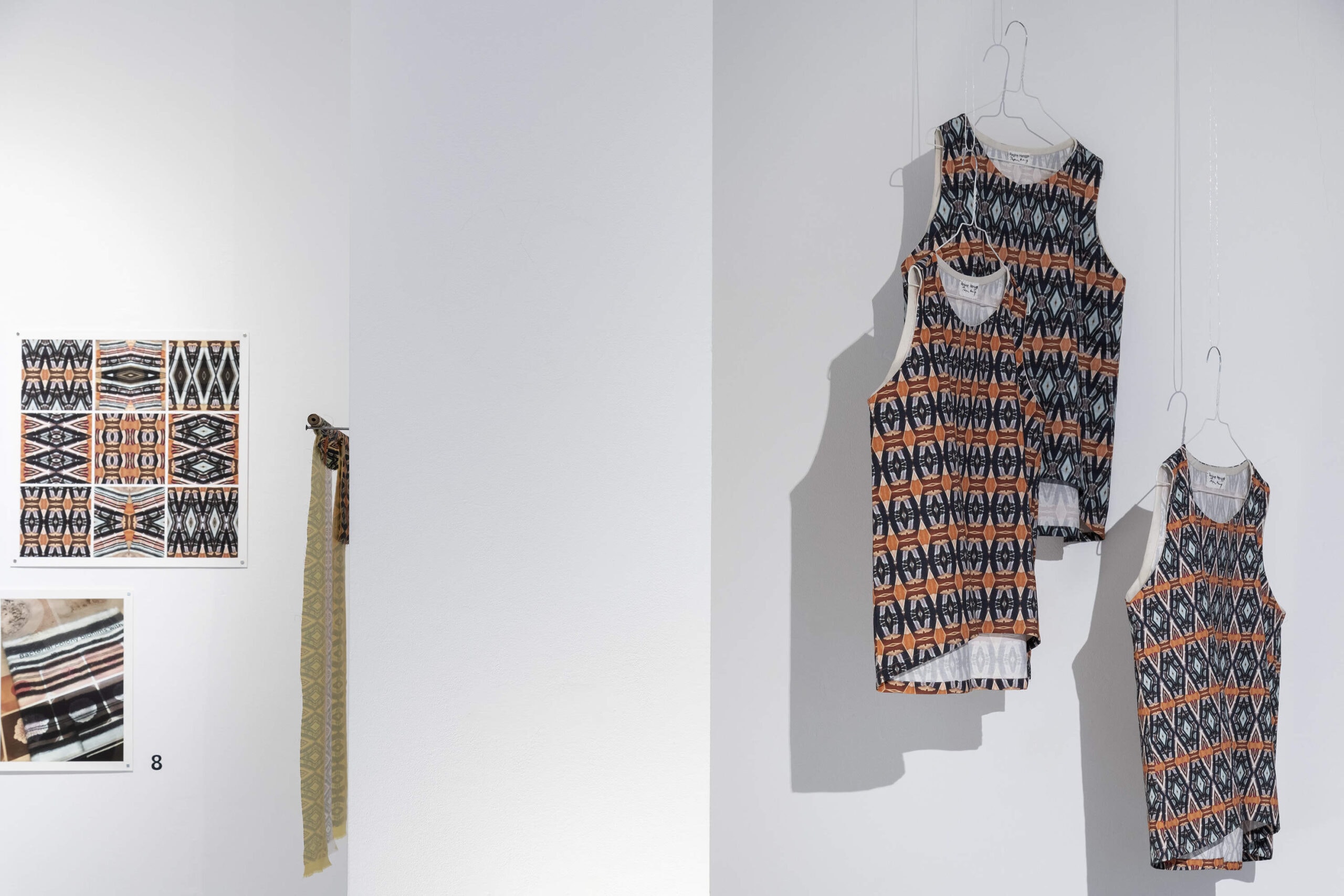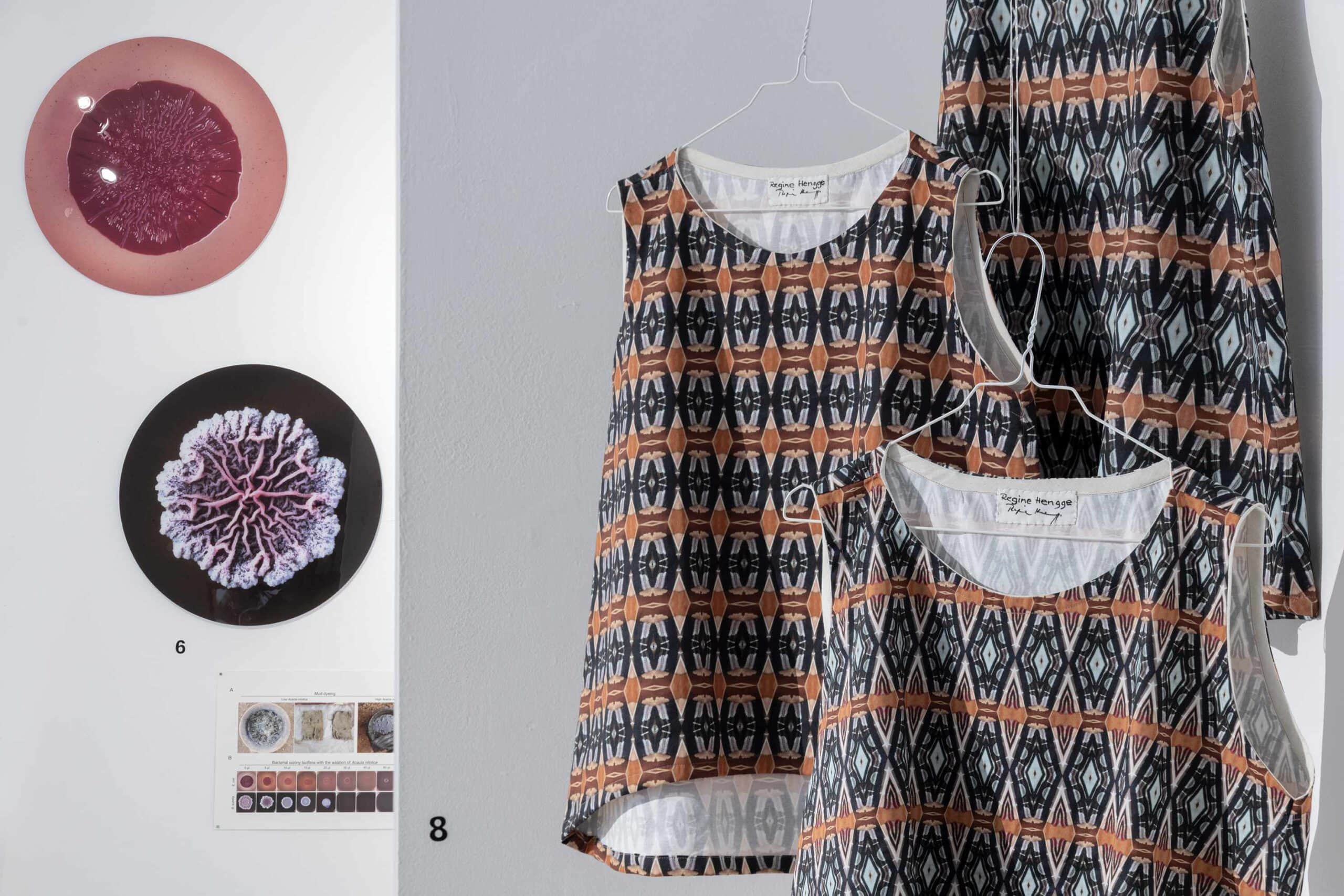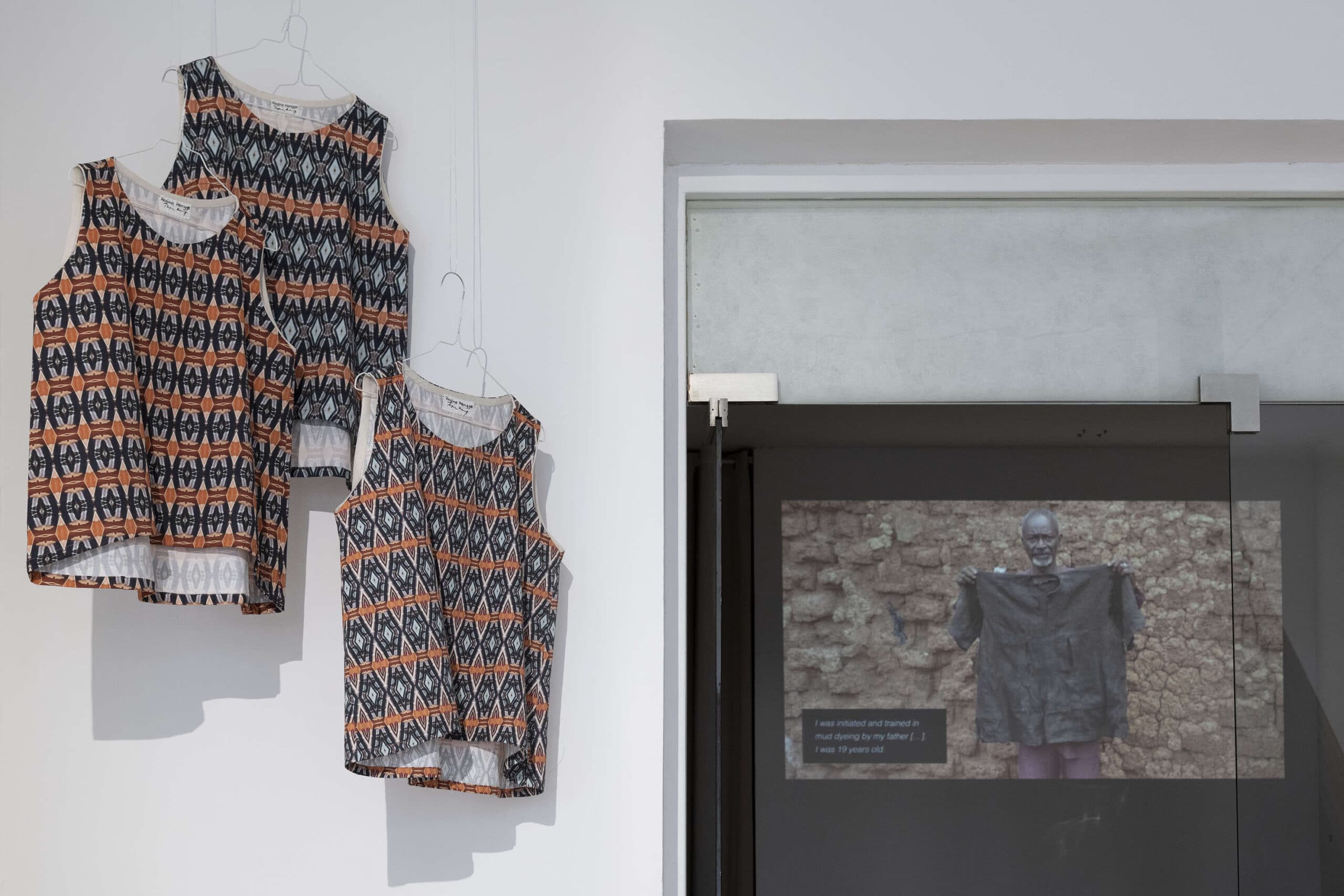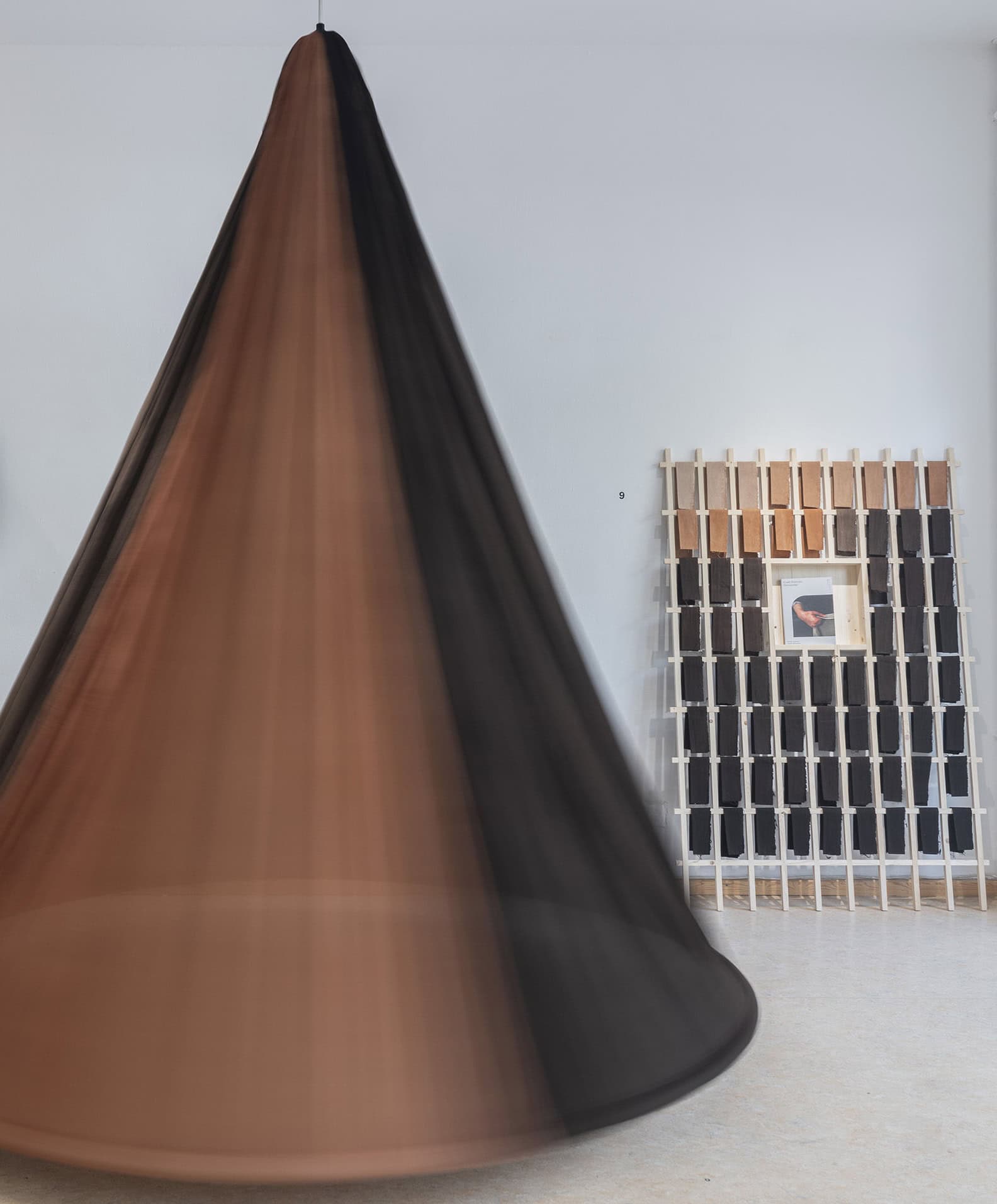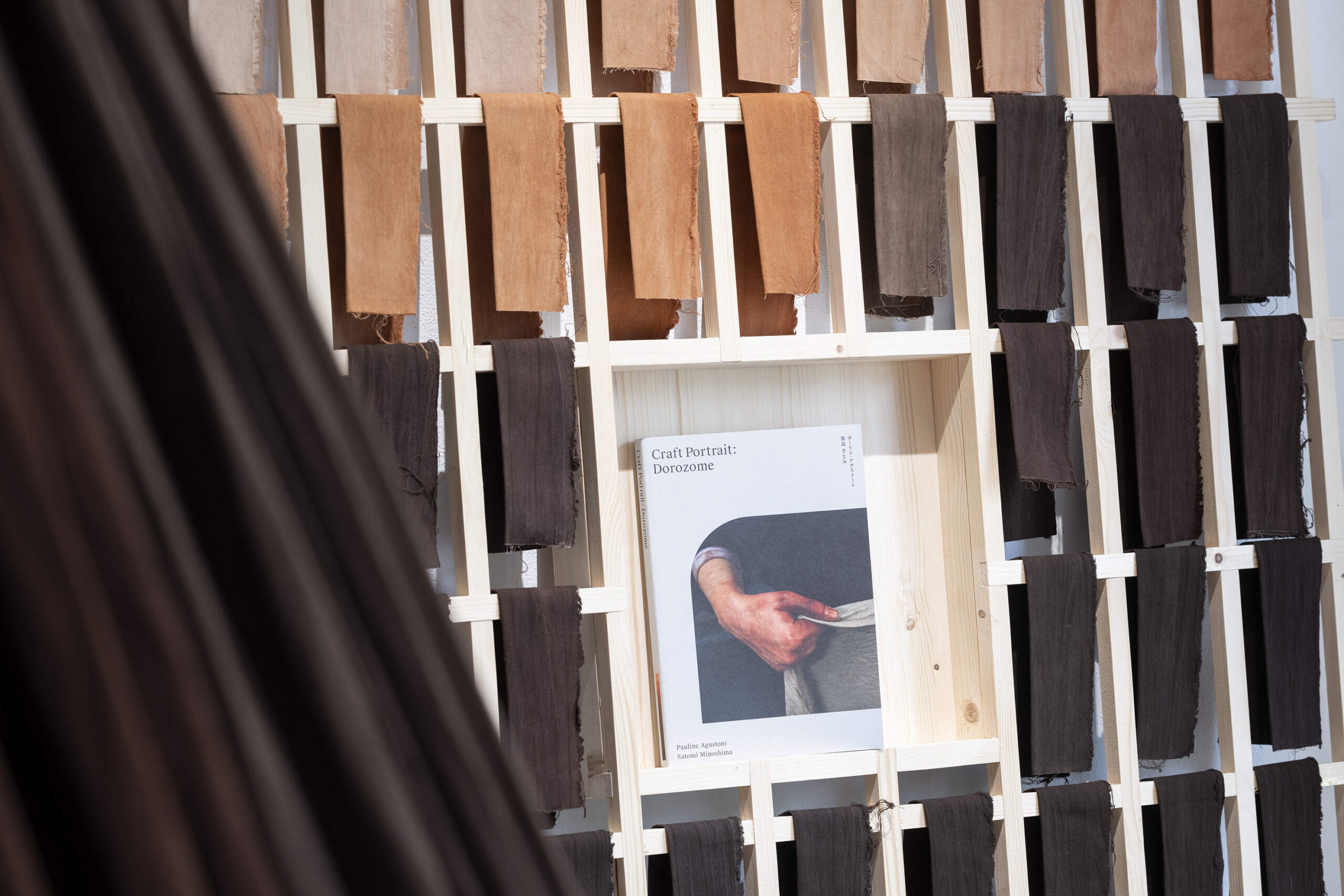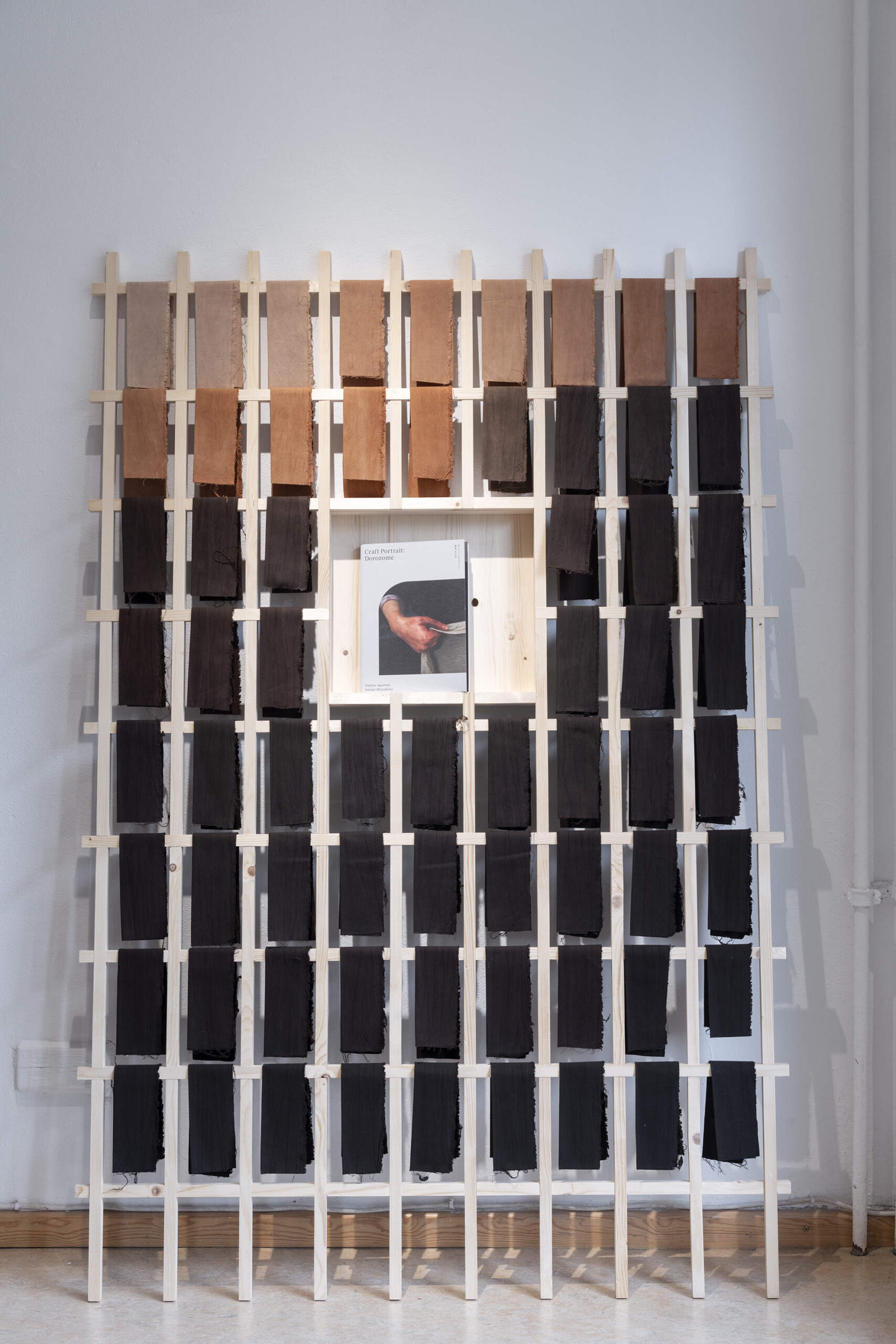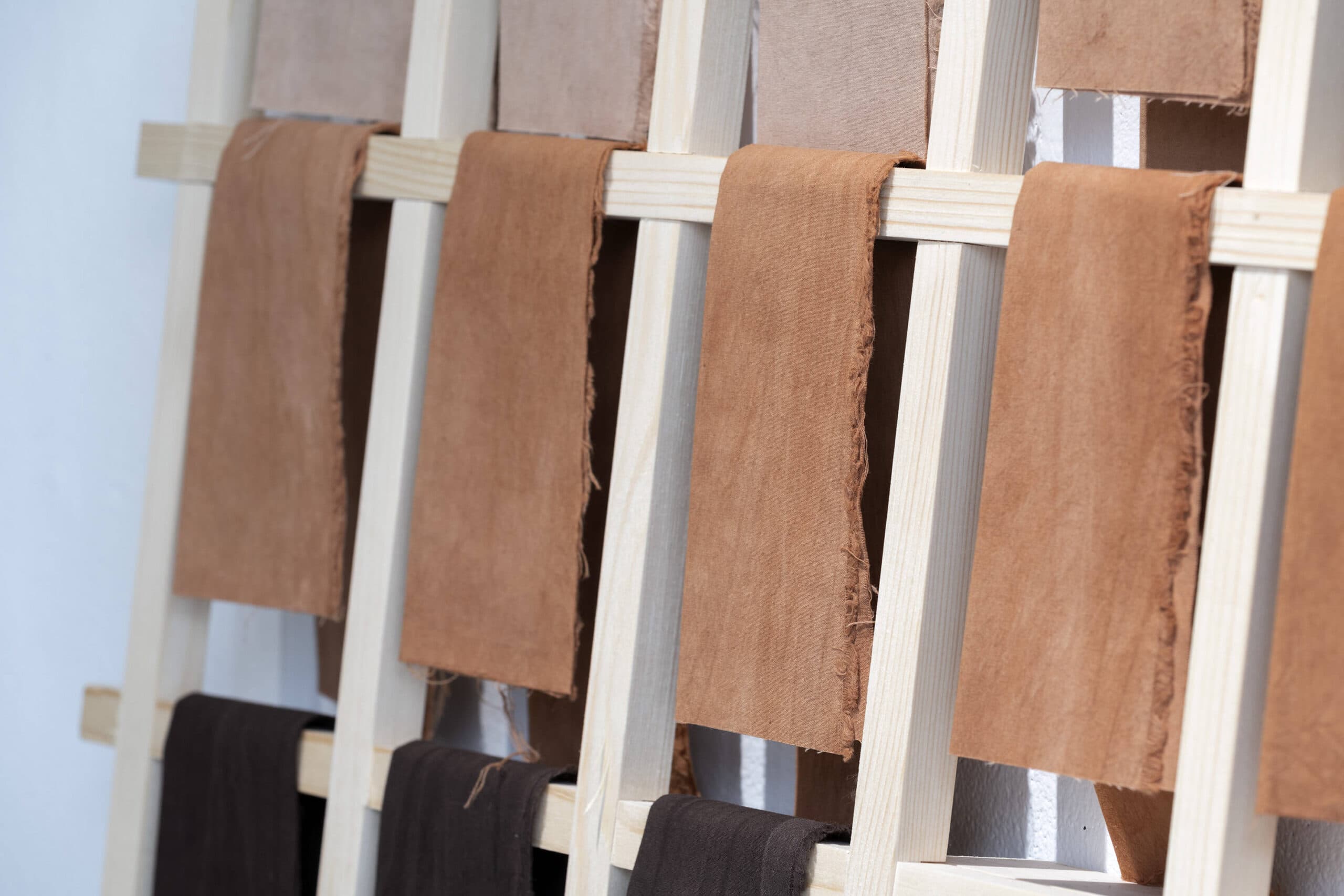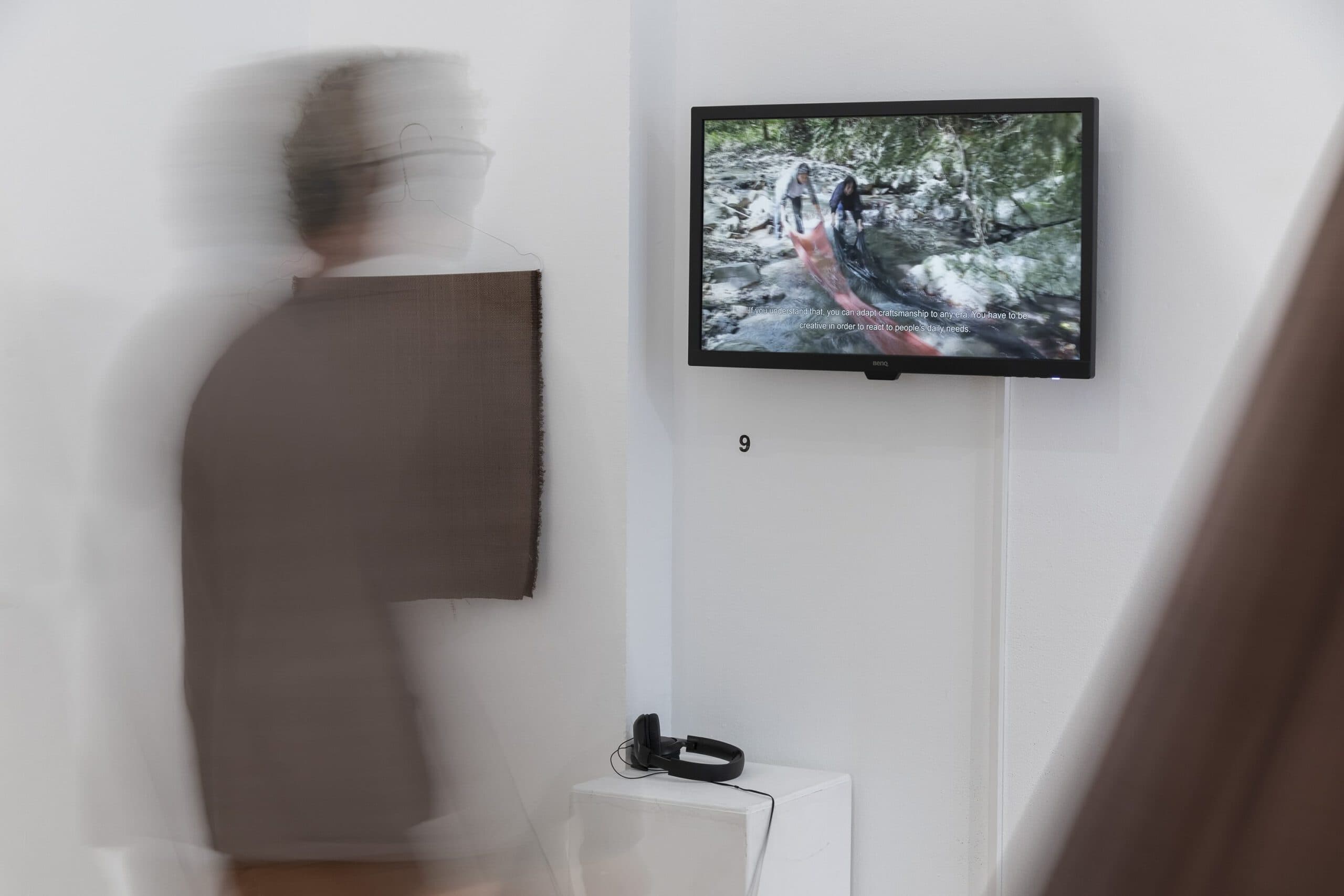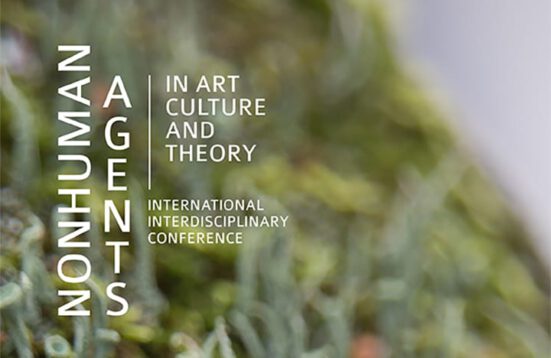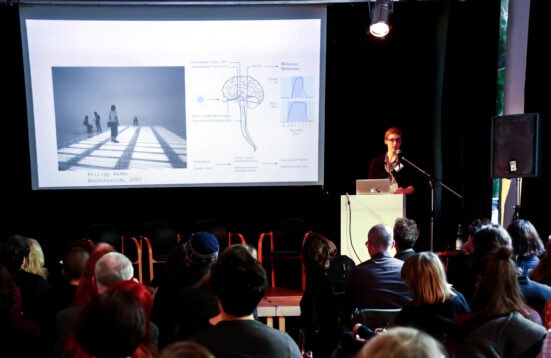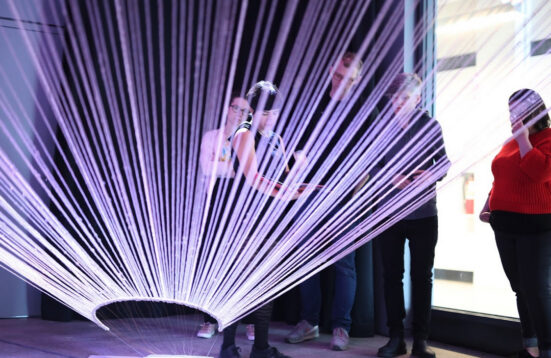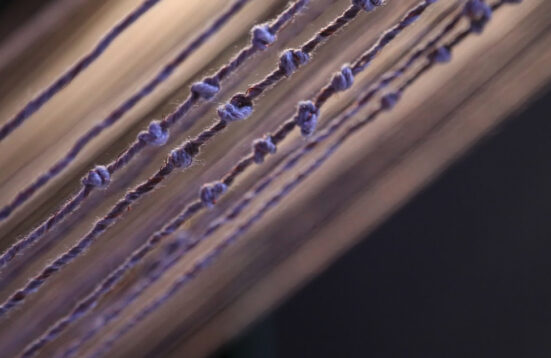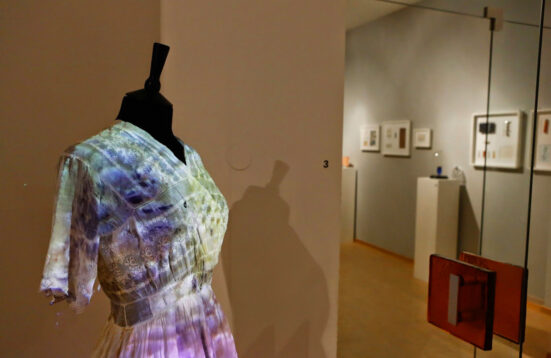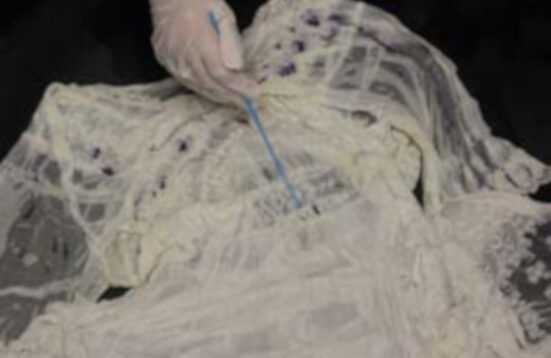FERMENTING TEXTILES
Weaving Together Traditional Craft, Anthropology, Microbiology, and Art
Adama Séré, Laurence Douny, Regine Hengge, Pauline Agustoni, Satomi Minoshima
Fermenting Textiles is a unique inter and trans-disciplinary research and exhibition project that puts active matter at the centre: it connects anthropology, microbiology, and art through the engagement of artisans, anthropologists, scientists, and artists, as well as more-than-human actors. Fermenting Textiles explores the fermentation of textile in mud and plant material to produce complex dyeing for various use – from traditional hunter shirts in Burkina Faso to kimono silk dyeing in Japan. In each case the process is artisanal and has fascinating traditional uses and meanings. Both cases make use of natural chemical and biological processes to create unique aesthetic and medicinal results.
Cross-cultural research methods also play a key role in Fermenting Textiles. Anthropologist Laurence Douny has worked with colleagues and dyers in Burkina Faso to meticulously document the long Vouwo mud dyeing process, which involves soil of different origins, iron ore, and various plant materials. Microbiologist Regine Hengge and her PhD student José I. Hernández Lobato have studied the complex interactions of soil bacteria with plants and fabrics in the dyeing process and visually re-enact these in the exhibition. Furthermore, Hengge reaches across fields by photographically creating patterns that combine images of bacterial biofilms from this scientific research and of the West African textiles studied by Douny. These have been printed on fabrics for making new shirts, thus completing a transdisciplinary journey from “shirt to shirt”.
The art and design project Craft Portrait: Dorozome by Pauline Agustoni and Satomi Minoshima explores fabric dyeing by artisans in the southern Japanese island of Amami Oshima. Traditionally, silk threads for kimono production, interwoven with cotton threads which are later removed to reveal undyed portions of textile, are initially dyed in a liquid bath of tree bark, before being repeatedly dipped in mud. This causes chemical reactions of complexation and oxidation, which create rich dark brown and black silks. While working with the artisans in Japan, Agustoni and Minoshima have also produced a textile sculpture of pink-brown and black strands, that twist and turn, emulating the act of wringing, an essential part of the dyeing process.
By combining these approaches, methods, and contexts, Fermenting Textiles stresses the agency and sentience of matter in the fermentation process and its versatile materiality. Speaking through the lens of Posthuman philosophy, matter actively performs, what philosopher Karen Barad describes as “a materialist, naturalist, and posthumanist elaboration – that allows matter its due as an active participant in the world’s becoming, in its ongoing ‘intra-activity’” (Barad 2003). The unique multi-national, multi- and trans-disciplinary cooperation that makes up the group exhibition Fermenting Textiles mirrors the multi-species collaborations that are integral to the mud dyeing process.
Regine Rapp & Christian de Lutz
Related Literature
Douny, L., Hernández Lobato, J.I., Séré, A., Sawadogo, S. and Hengge, R. (2023). The hunter shirt: the role of Acacia nilotica in fermentative textile dyeing. Acta Hortic. 1361, 67-76, DOI: 10.17660/ActaHortic.2023.1361.8.
Douny, L., Hengge, R., Hernández Lóbato, J.I., Rapp, R. & de Lutz, C (2025) Fermenting Textiles: the Hunter Shirt. In: Final publication of the Excellence Cluster Matters of Activity (in preparation; to be published by Birkhäuser).
Douny L, Lobato JIH, Amini S, Séré A, Sawadogo S, Fratzl P, Hengge R (2025) Vouwo mud dye: A material, microbiological and cultural approach to researching sustainable textile dyes. Coloration Technology. 1-12. doi:10.1111/cote.12824
More information:
https://www.matters-of-activity.de/en/posts/16004/fermenting-textiles
https://www.matters-of-activity.de/en/research/projects/55/weaving
https://www.matters-of-activity.de/en/
The project Fermenting Textiles is part of the Matters of Activity. Image Space Material Cluster of Excellence, Humboldt-Universität zu Berlin. It also takes part in the Excellence Cluster __matter FESTIVAL 2025, Matters of Activity, Image Space Material Cluster of Excellence, Humboldt-Universität zu Berlin and is part of the Berlin Design Week 2025.
Adama Séré is a Marka-Dafing master dyer, traditional healer, and head of the Hunters Association Batônôtiban of the Mouhoun region of Burkina Faso. Native of the village of Safané, he inherited the craft of dyeing hunting garments with medicinal plants and mud known as vouwo for domestic and ceremonial usages from his father, Passourou Séré. With over 50 years of experience in dyeing textiles, Adama has collaborated on the ‘Hunter shirt’ project with researchers at the Excellence cluster ‘Matters of Activity. Image Space Material’, at Humboldt University, Berlin. In this transdisciplinary venture, Adama conducted a series of in-the-field craft experiments using various mud dye recipes he applied to cotton fabrics to explore color-making while also demonstrating the sustainable dimension of his art.
Dr. Laurence Douny is a research associate at the Excellence cluster Matters of Activity. Image Space Material at Humboldt University Berlin, working on textiles making in West Africa in the lens of an anthropology of materials, techniques and environments. Using a fieldwork-based and multi-species approach, she investigates the material and cultural properties of wild silk fabrics and their substitutes through complex fermentative dyeing techniques. Her research on Fermented Textiles highlights centuries-old craft of fiber enhancement within the context of sustainability, achieved through collaborations with artisans, microbiologists and material scientists. Douny is a member of the steering committee of ArtBioMatters (ABM) (NYU/The Met) and a research member of the project WILDSILKS, funded by the French Agence Nationale de la Recherche (ANR). She has recently accomplished, with Marka-Dafing artisans of Burkina Faso, the documentation of wild silk’s production funded by the Endangered Material Knowledge Program (EMKP)/Arcadia Fund at The British Museum.
Prof. Dr. Regine Hengge, Professor of Microbiology at Humboldt University Berlin, pioneered research on how bacteria survive harsh stress conditions, with a focus on molecular signaling and regulation and the complex architecture and morphogenesis of bacterial biofilms. In the Excellence Cluster Matters of Activity, she explores the fabrics and forms of life at the interfaces of science and art. Her projects range from bacterial cellulose as a self-growing living material for design to fermentative textile dyeing and visual re-enactments of plant-microbe interactions in art projects. Based on combined anthropological, historical and molecular microbiological studies of traditional medicinal and craft practices, she has developed the concept of human-curated multi-species interactions as a basis for more sustainable technology. For her scientific research she received the Gottfried Wilhelm Leibniz Prize and an ERC Advanced Investigator Grant. She is an elected member of Leopoldina, EMBO and other scientific academies.
Pauline Agustoni is a Swiss artist and designer. At the intersection of conceptual design and art, her work explores the poetry of encounters between materials, techniques, and gestures of making. Since her graduation from Design Academy Eindhoven, she explores how intertwined we are with the goods we shape, and how they shape us in return. By immersing herself in production spaces and processes, she places moments of exchange—with people and with materials—at the core of her practice. Through her projects, be them installations, publications or object series, she encourages a heightened awareness of the gestures and techniques that shape our material world. Her experience ranges from the collaborative project Craft Portrait, a ceramics residency at EKWC, freelance work for designer Hella Jongerius, and exhibitions at Swiss Design Awards in Basel, Atelier MUJI Ginza in Tokyo and Nieuwe Instituut in Rotterdam.
Satomi Minoshima is a Japanese designer driven by a passion for exploring the possibilities of different materials and colors. She seeks to understand the singular context surrounding specific colors and materials leading to a new interpretation and perspective of their creation process. By always honoring the tangibility of the object, Minoshima’s design approach combines material-based research and a genuine and poetic narrative to bring her concepts to life. She holds degrees from Musashino Art University in Tokyo (2014) and Design Academy Eindhoven (2019) and has exhibited her work internationally. Currently based in the Netherlands, she was recognized with Raising Talent Awards Japan from Maison & Objet in 2022.
Press Feedback
„Biologische Materialien sind oder waren zumindest Lebewesen – und Leben bedeutet Aktivität“. Interview with microbiologist Regine Hengge, in the Press Portal of the Humboldt Universität Berlin by Kristina Vaillant (13 May 2025)
Funktionskleidung aus Schlamm und Bakterien: Berliner erforschen nachhaltige Textilien aus Westafrika, in Tagesspiegel by Martin Ballaschk (22 May 2026)
‘Fermenting Textiles’, an intimate portrait of the act of mud-dyeing fabrics that opens a dialogue in the field of fabric colouring, in CLOT Magazine London, by Juliette Wallace (26 May 2025)
Fermentiertes Wissen, in taz by Brigitte Werneburg (10 June 2025)

